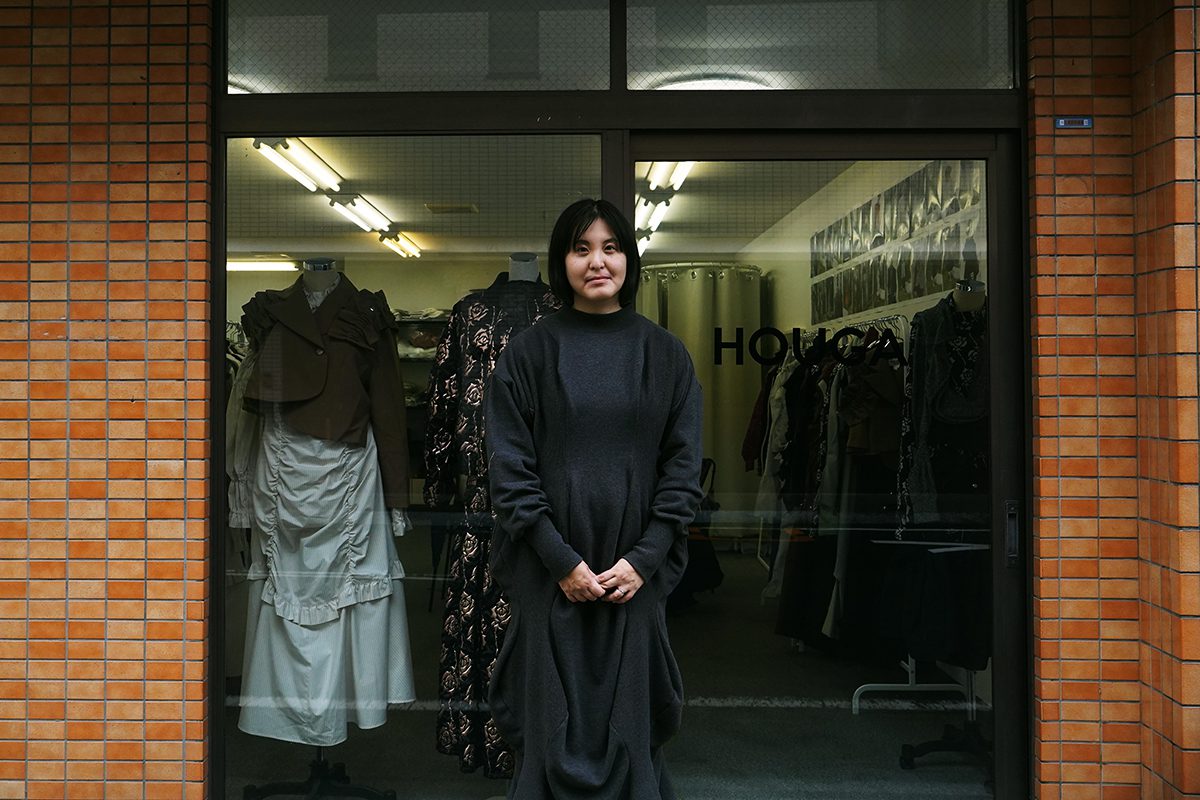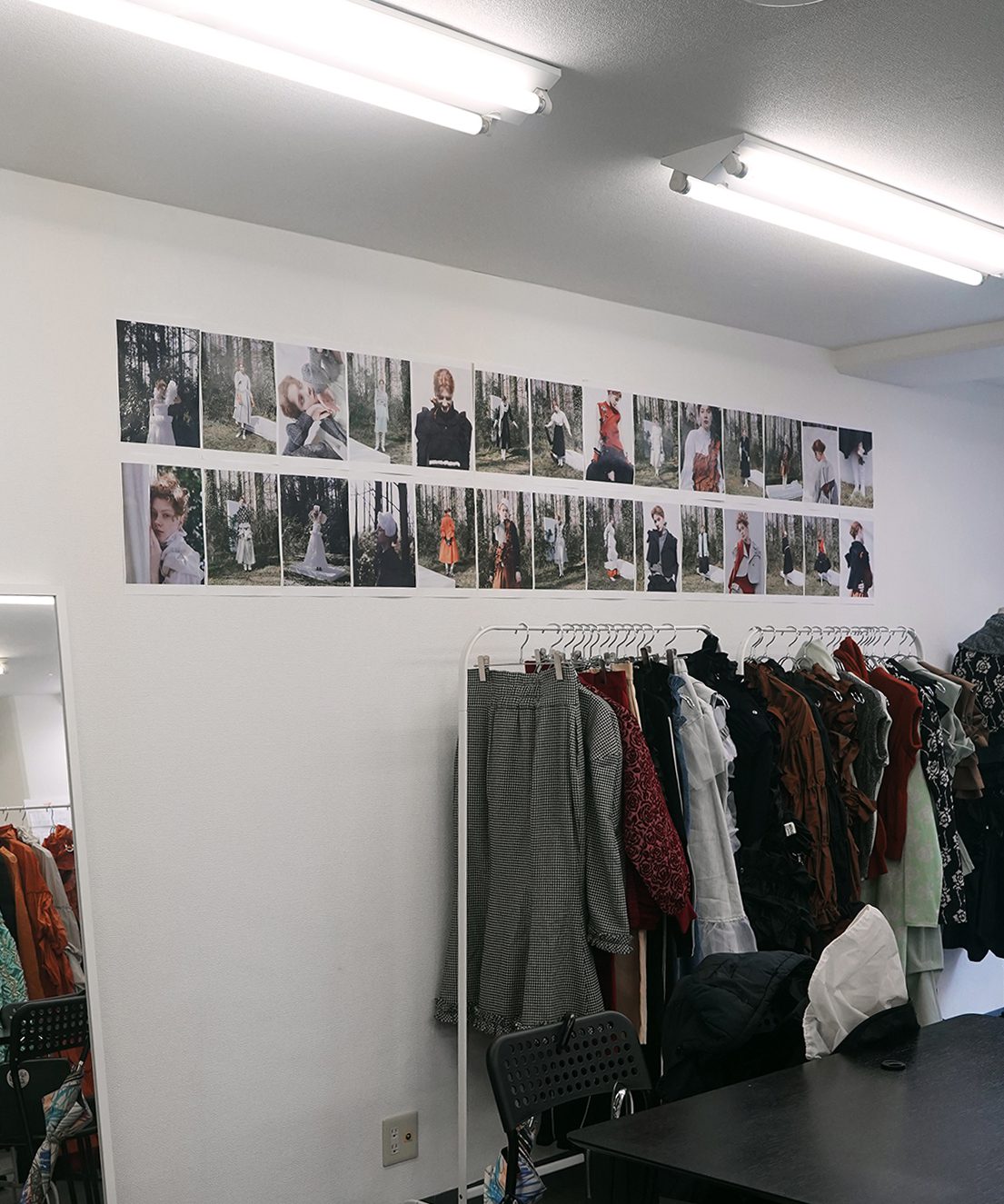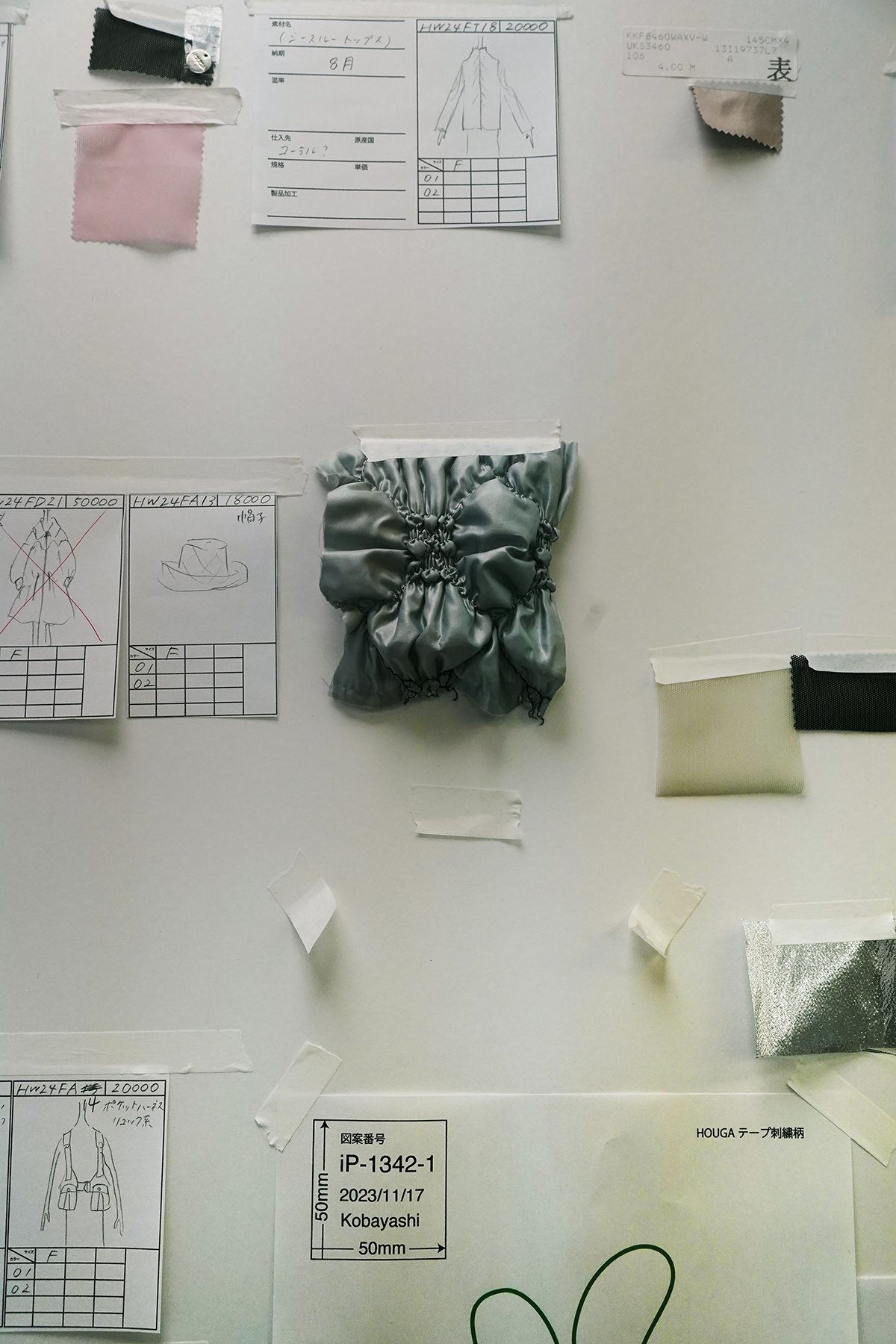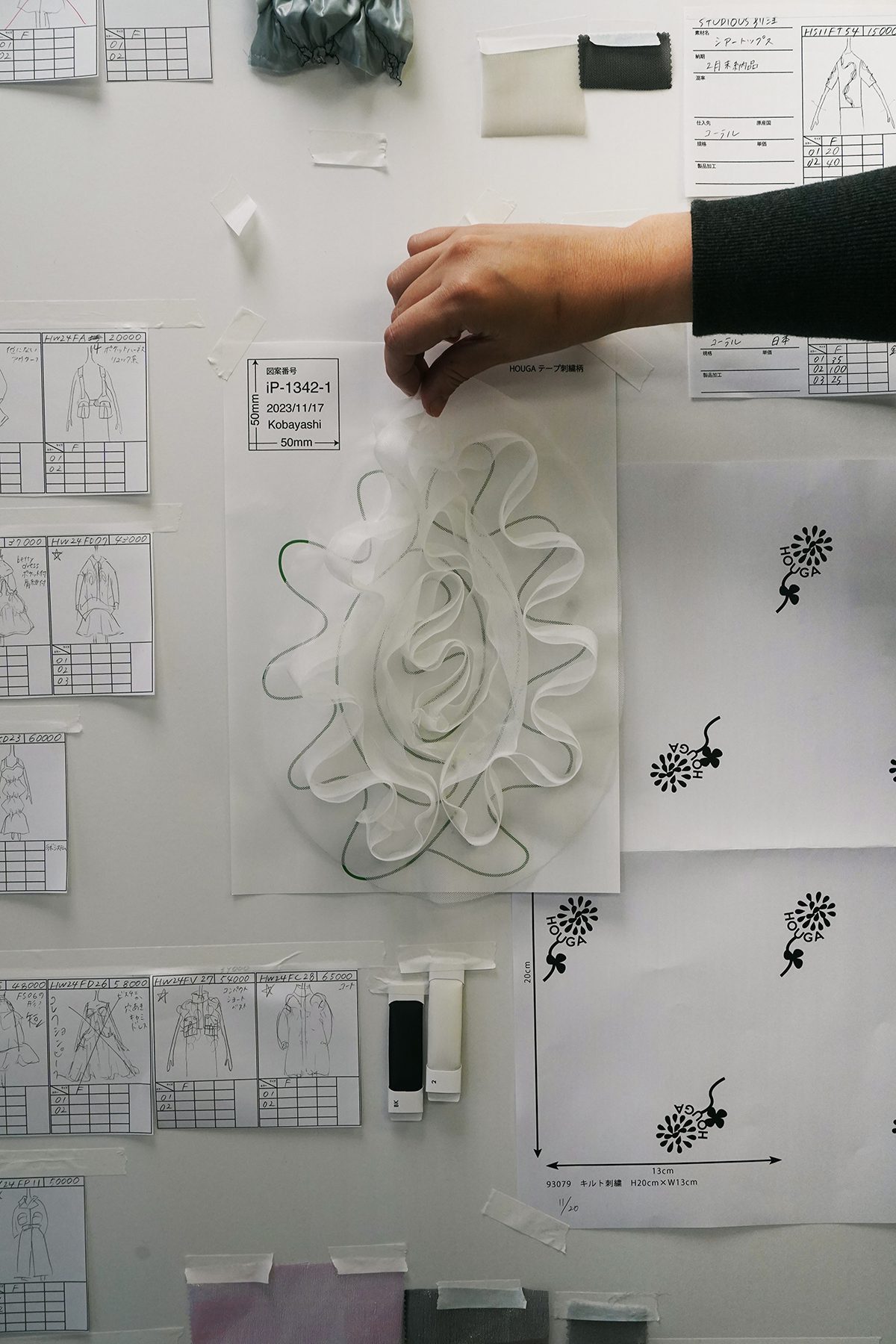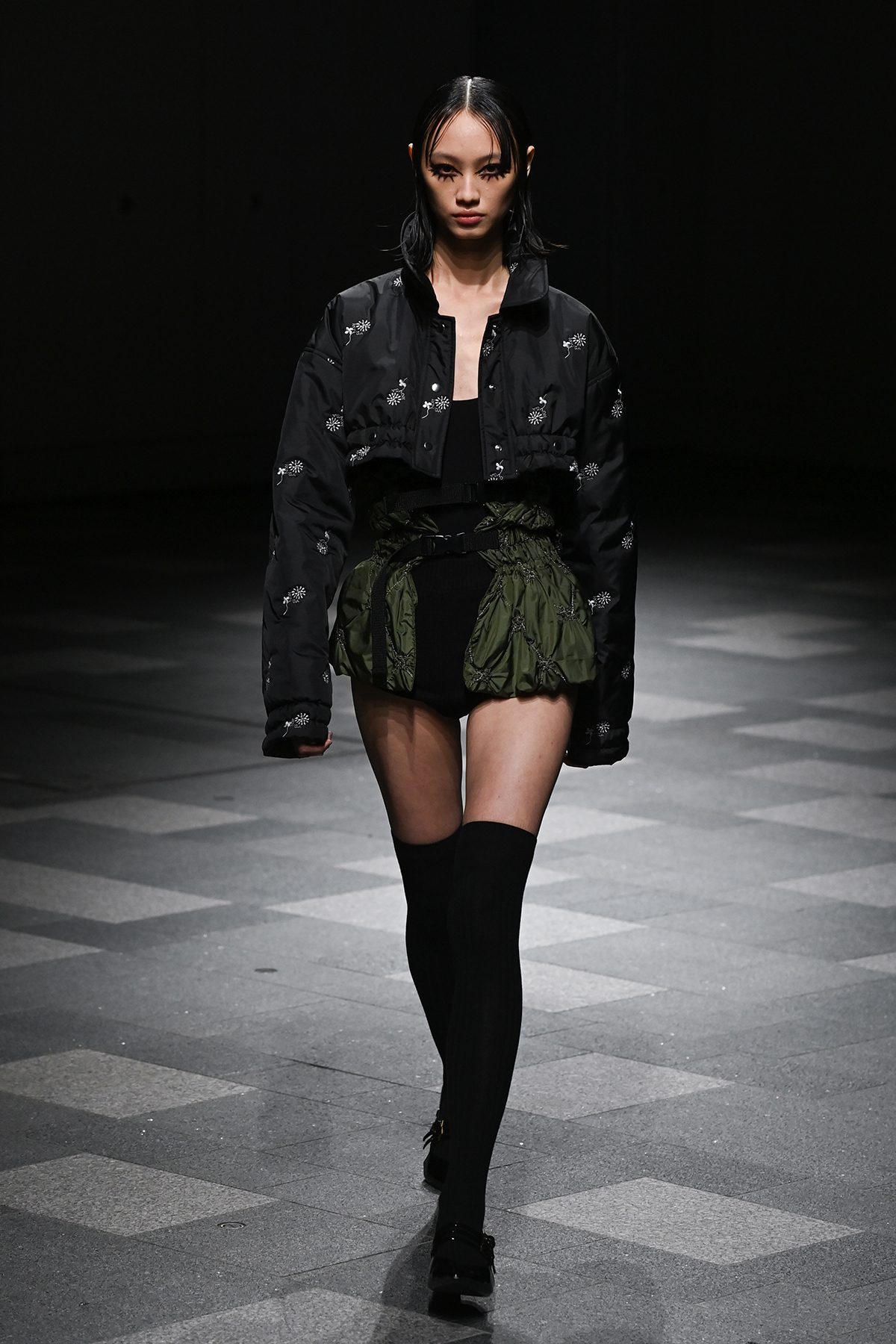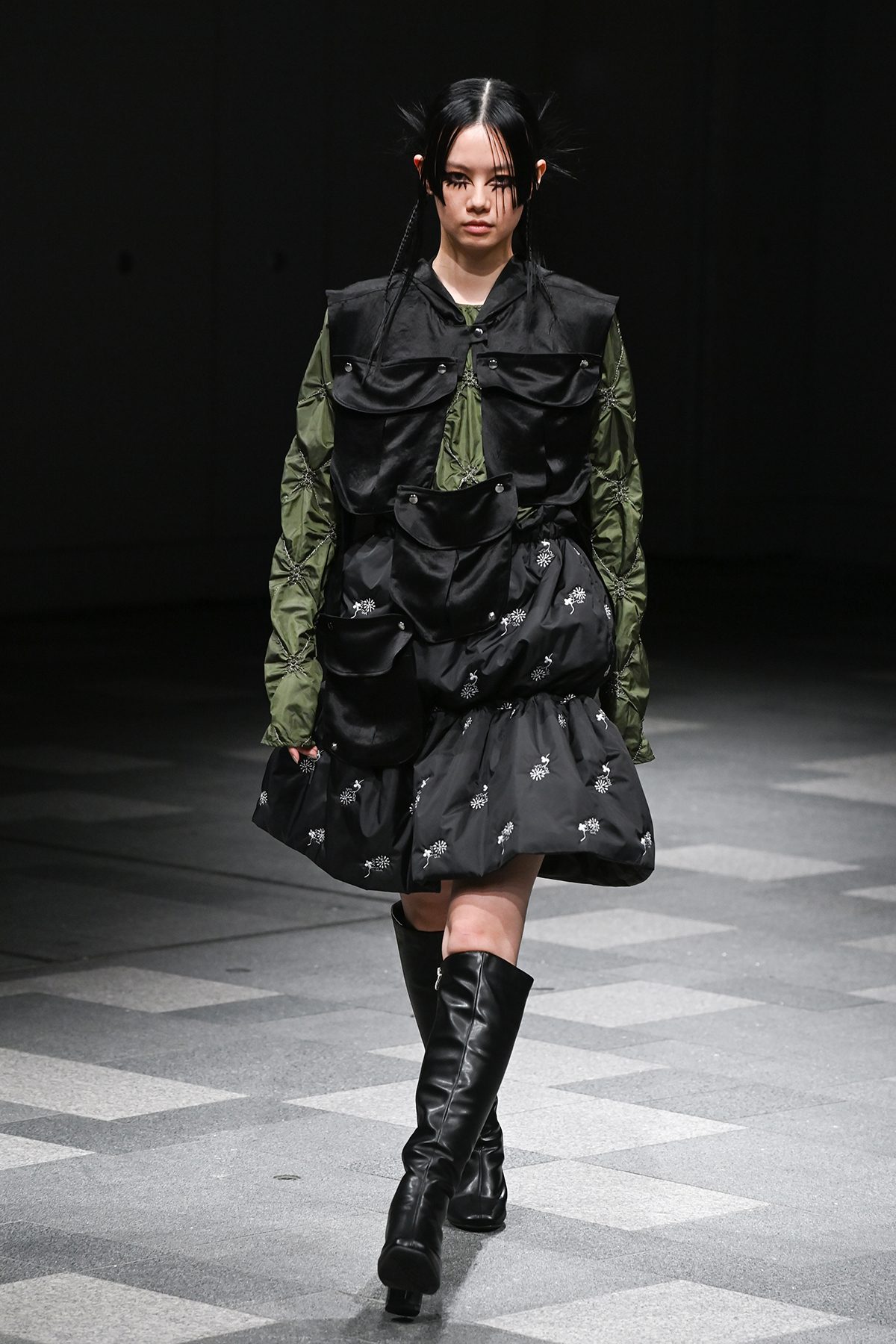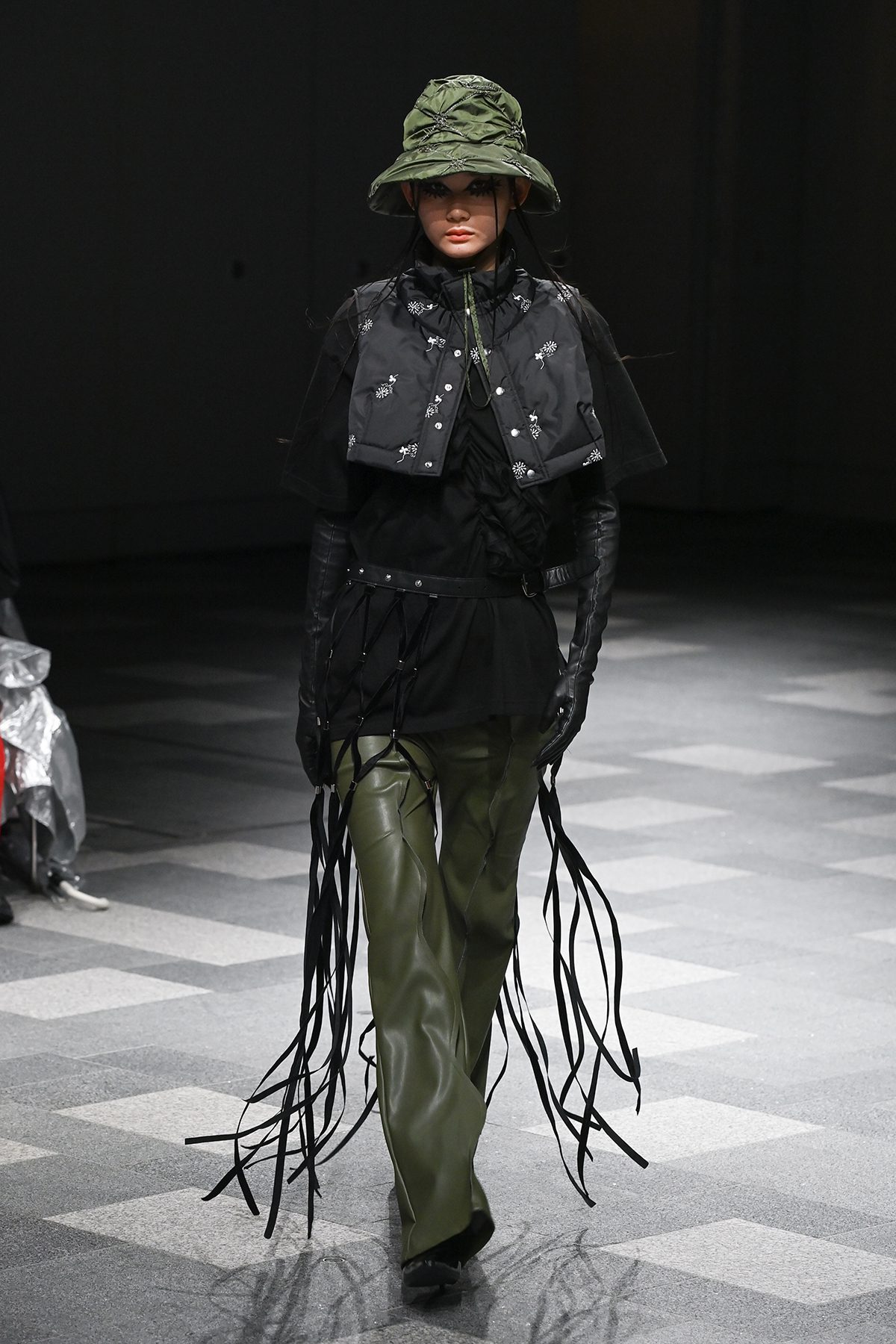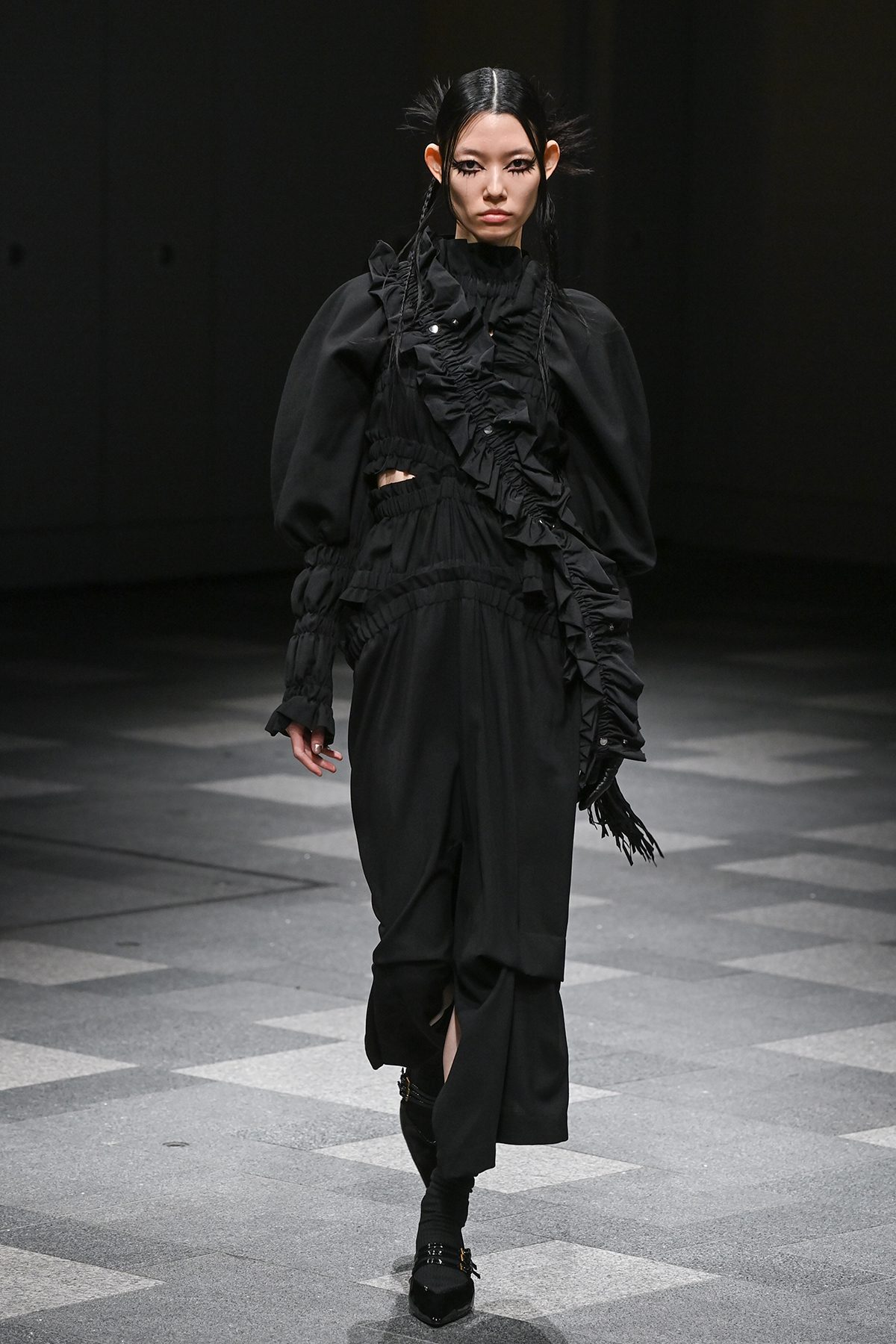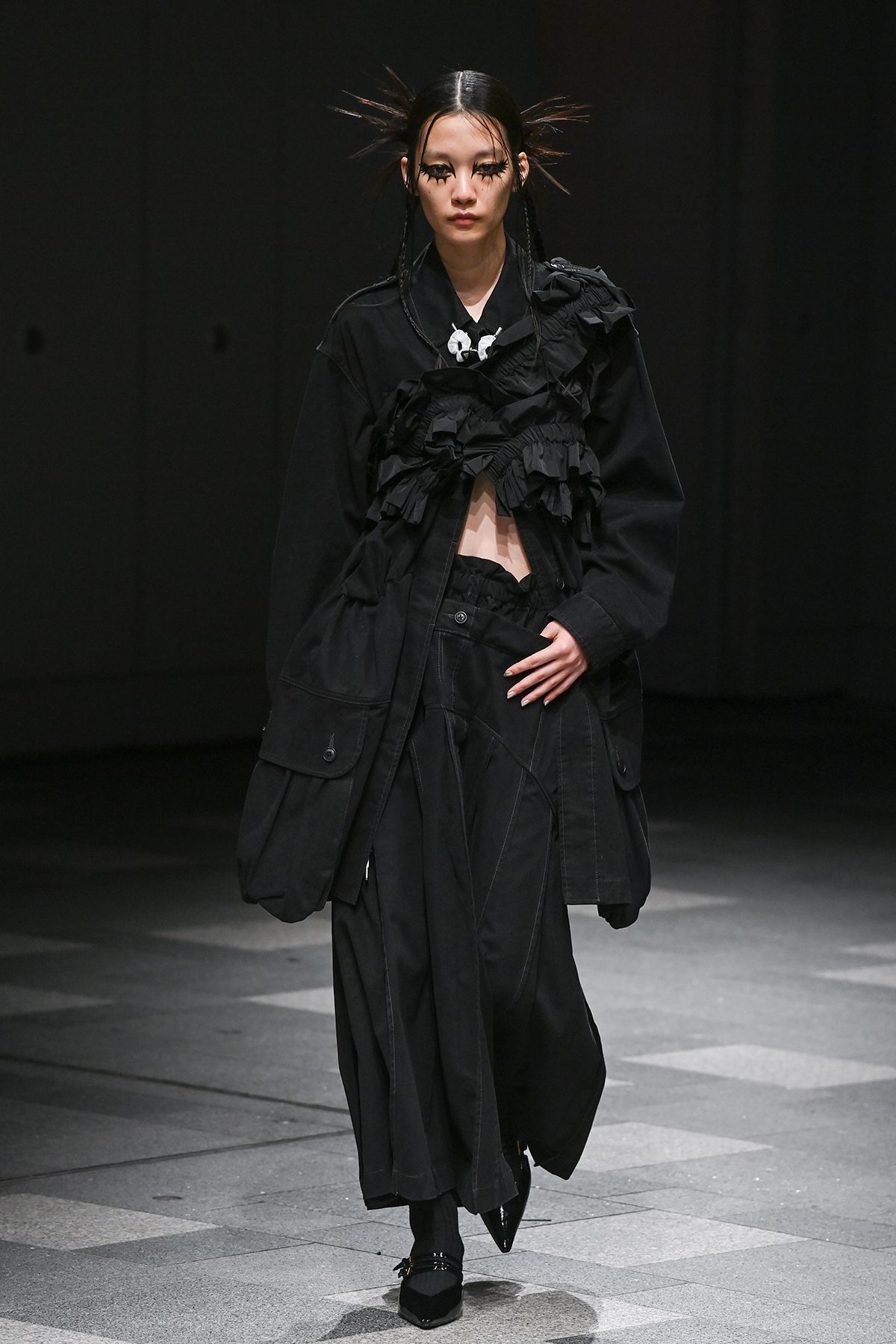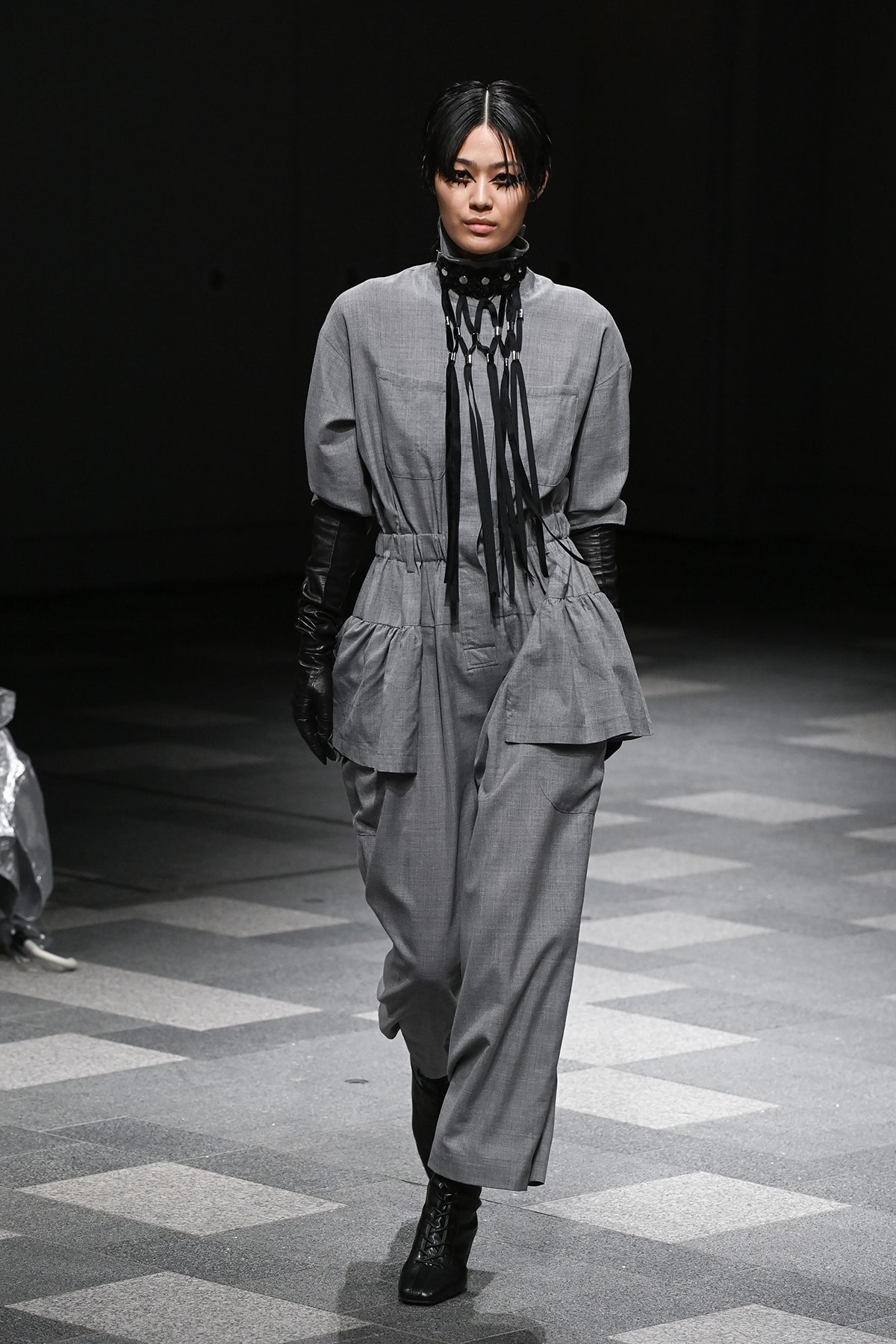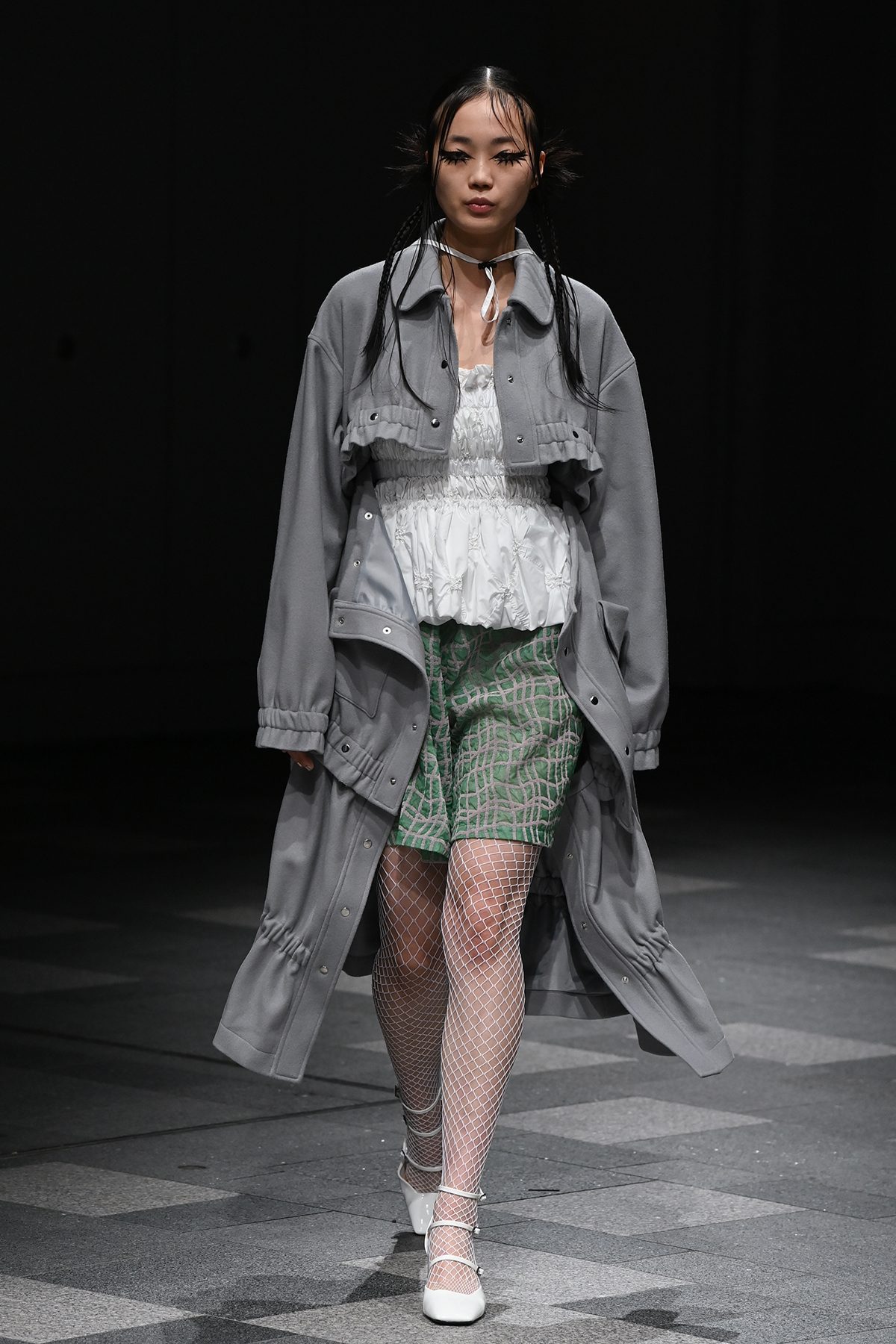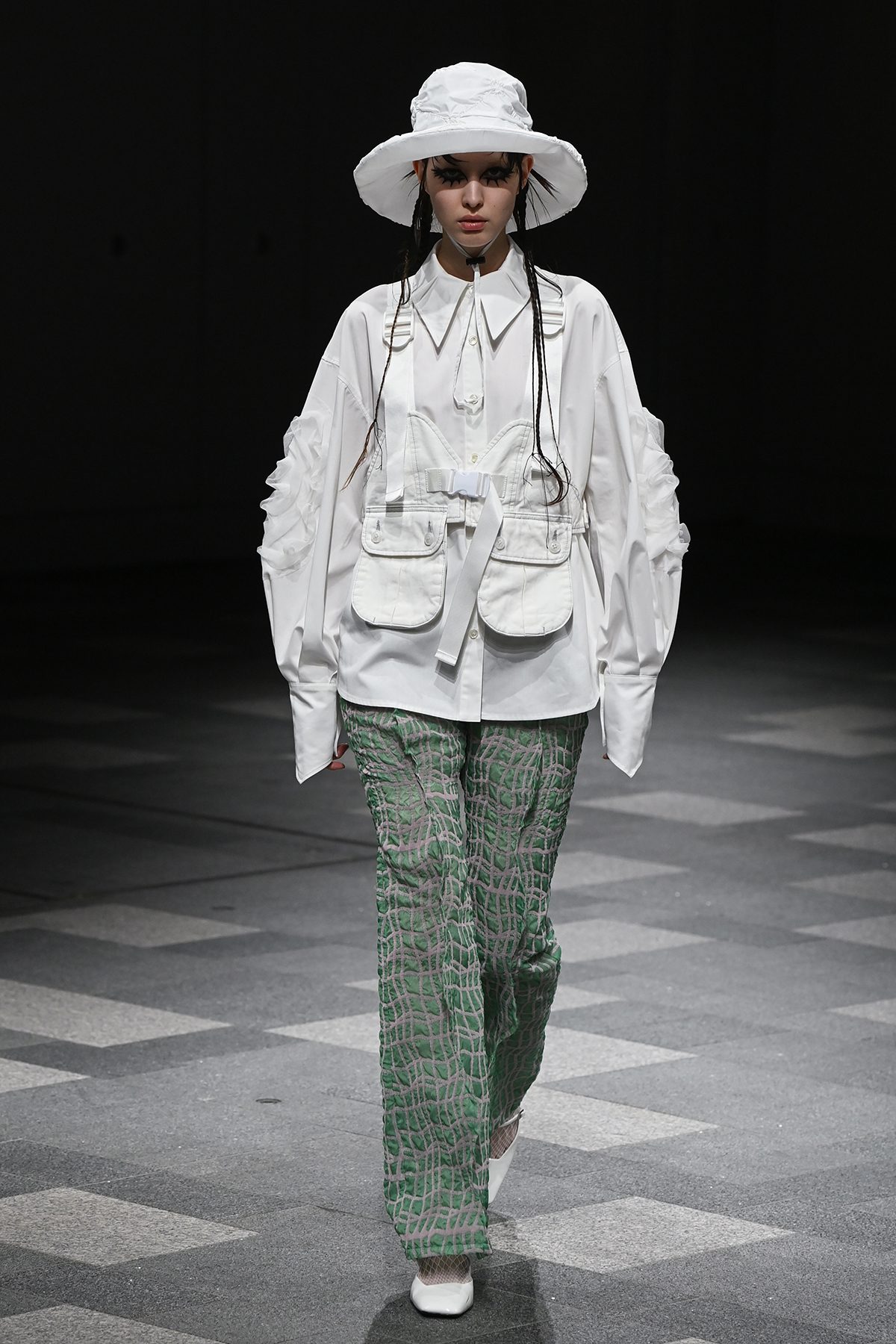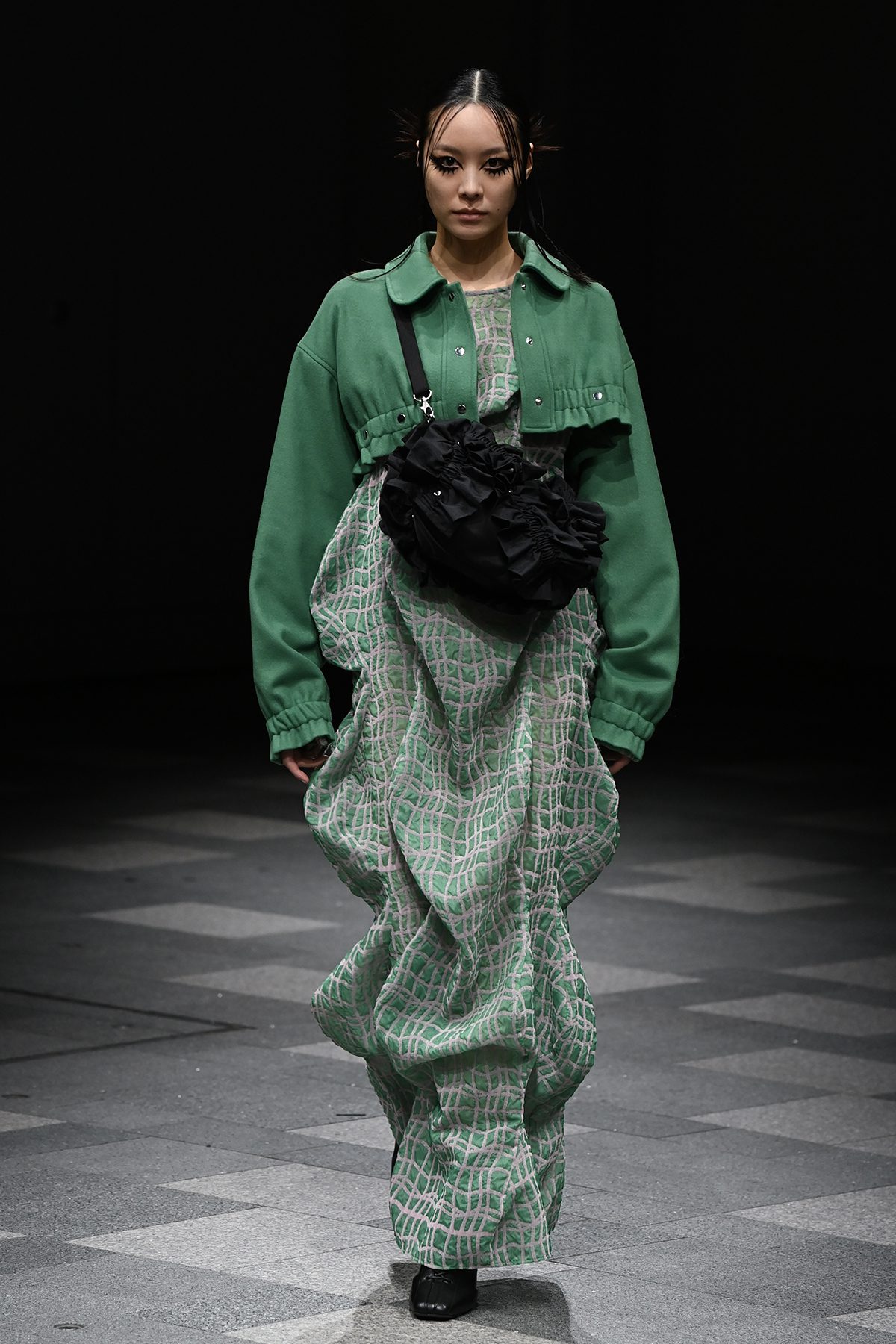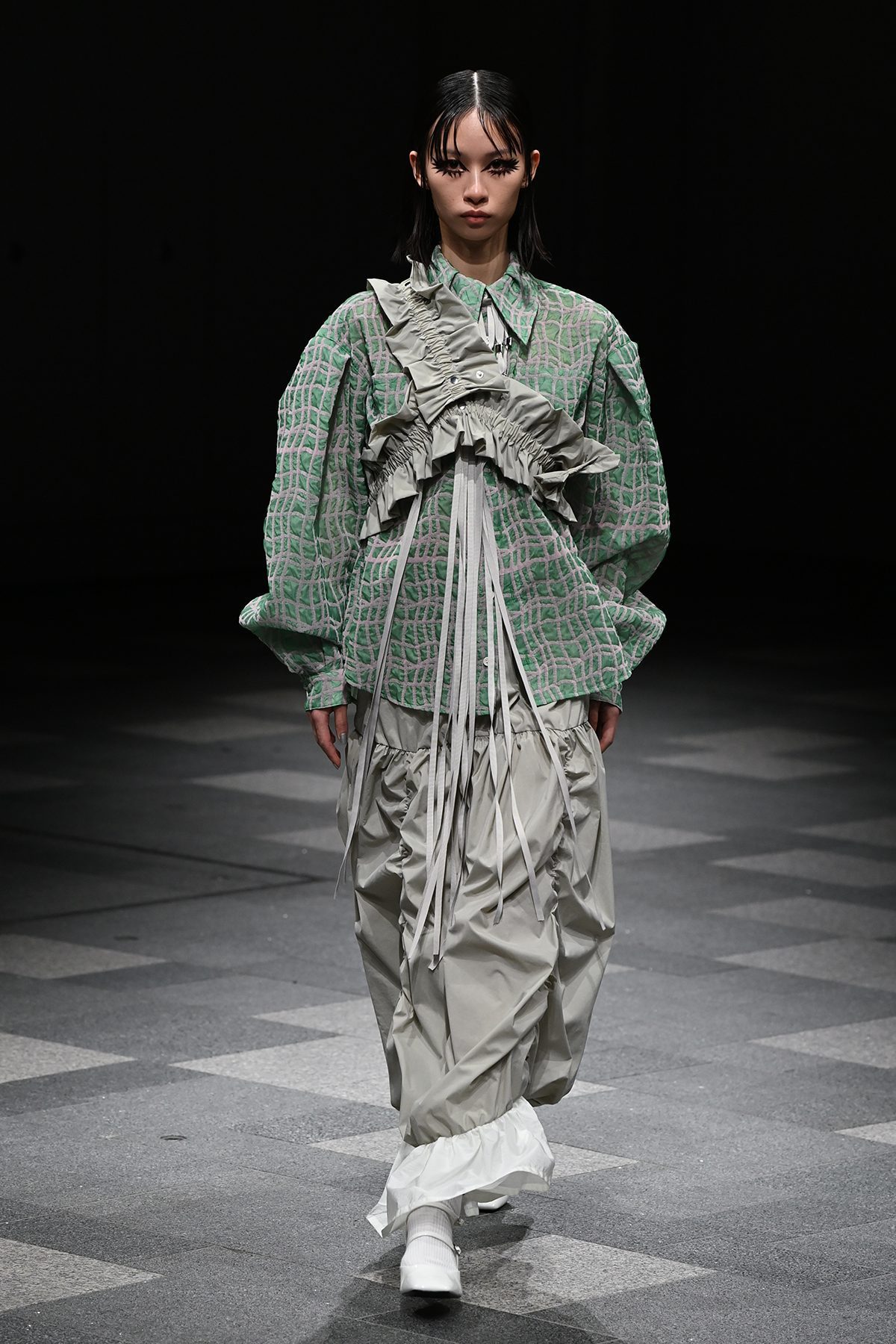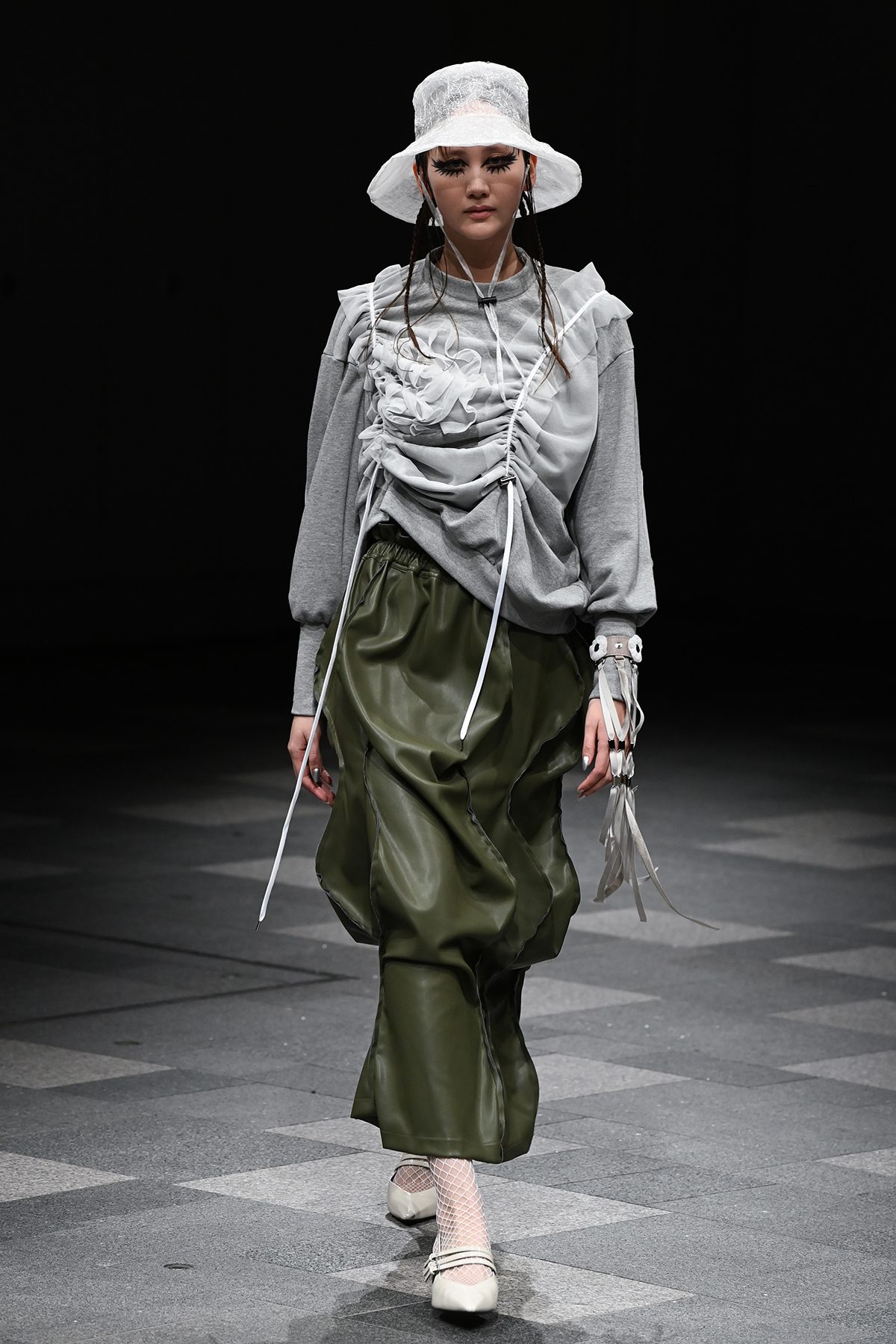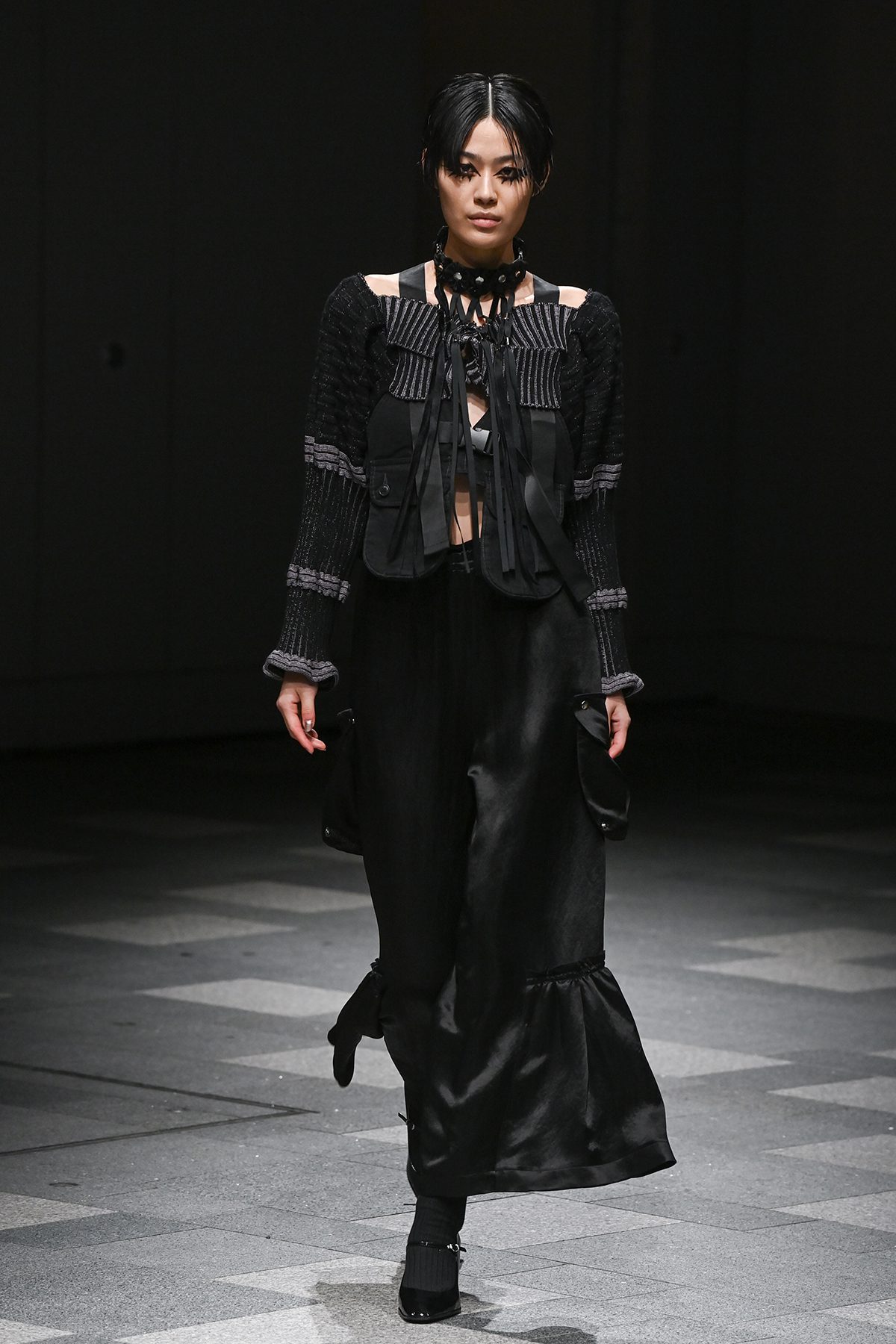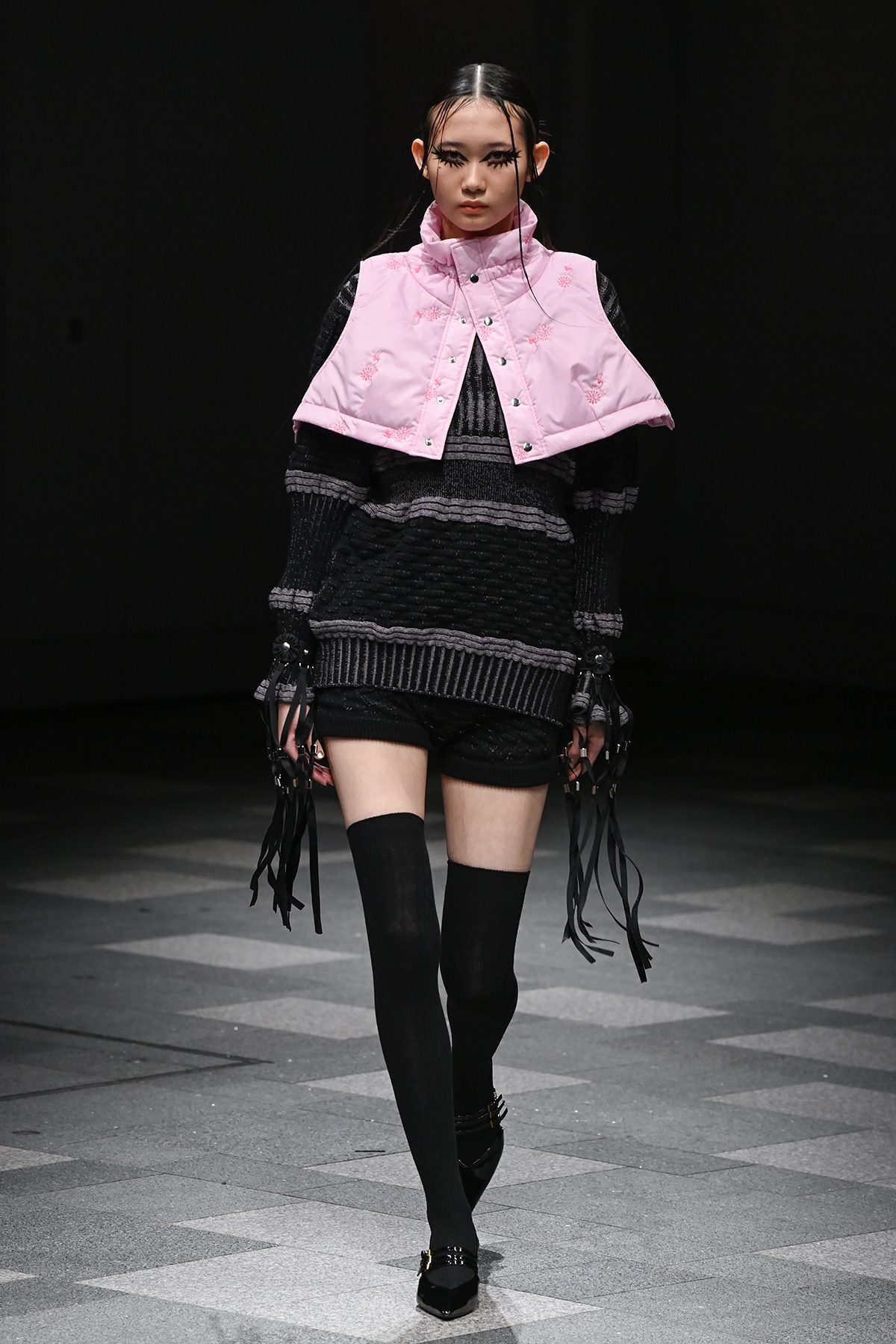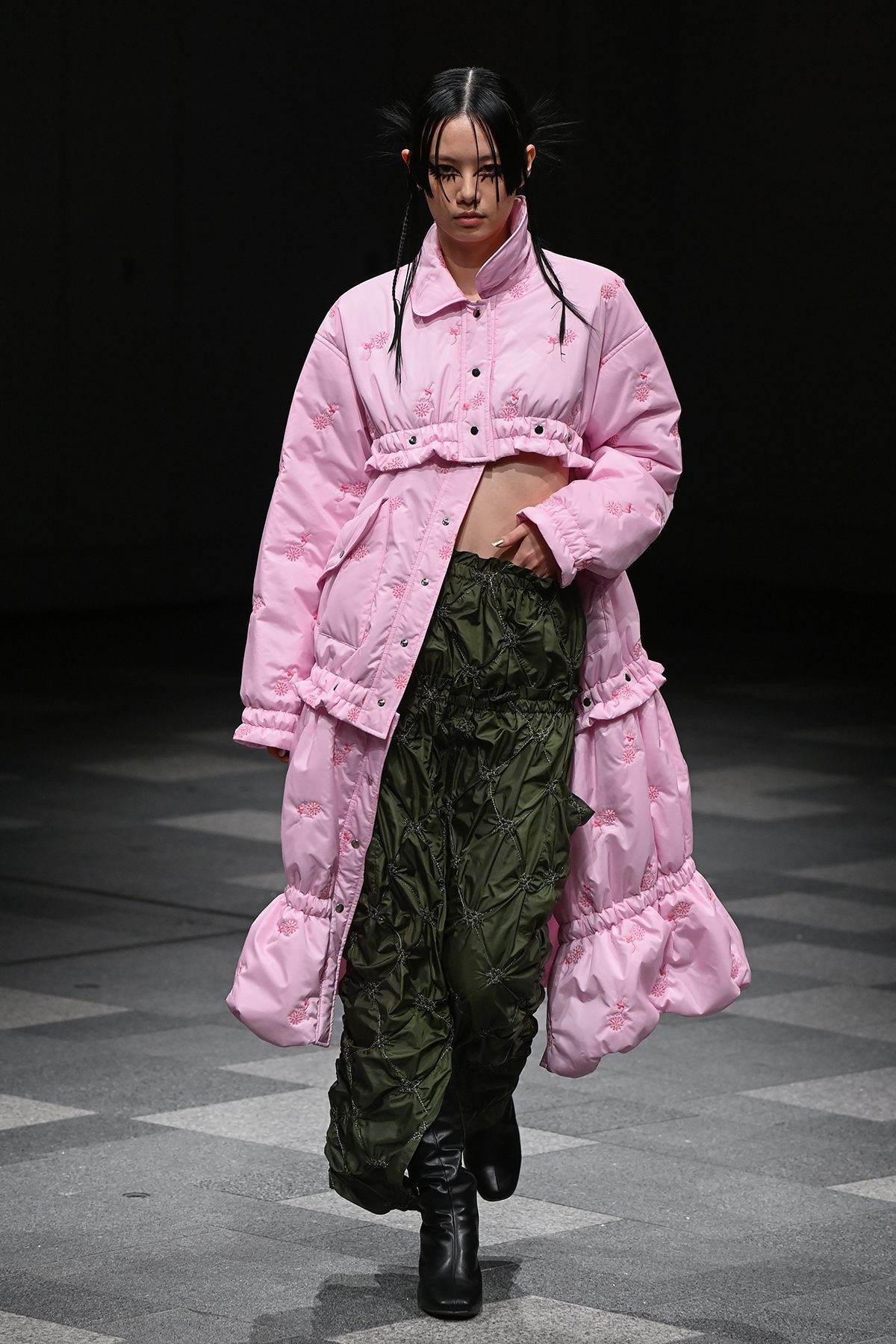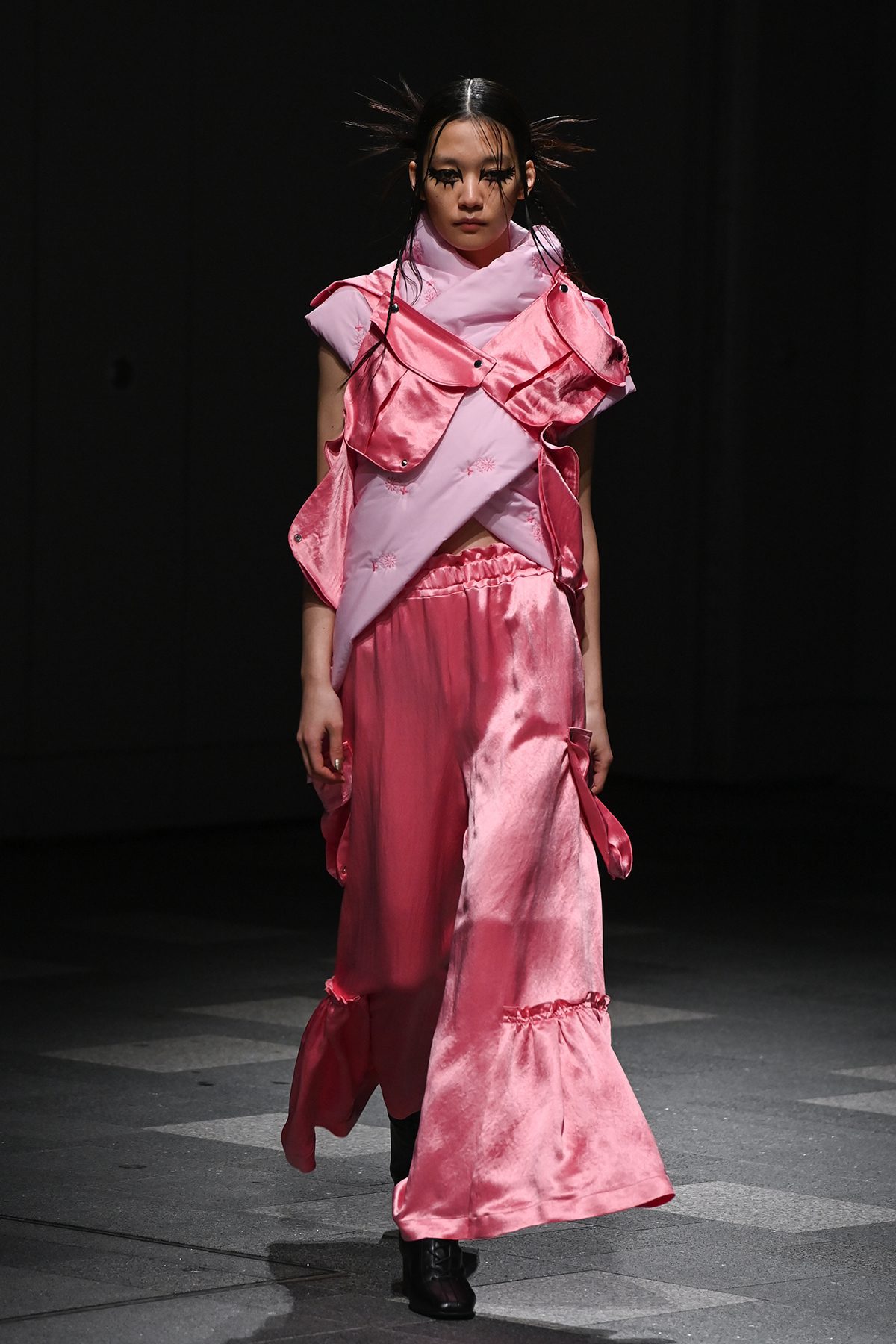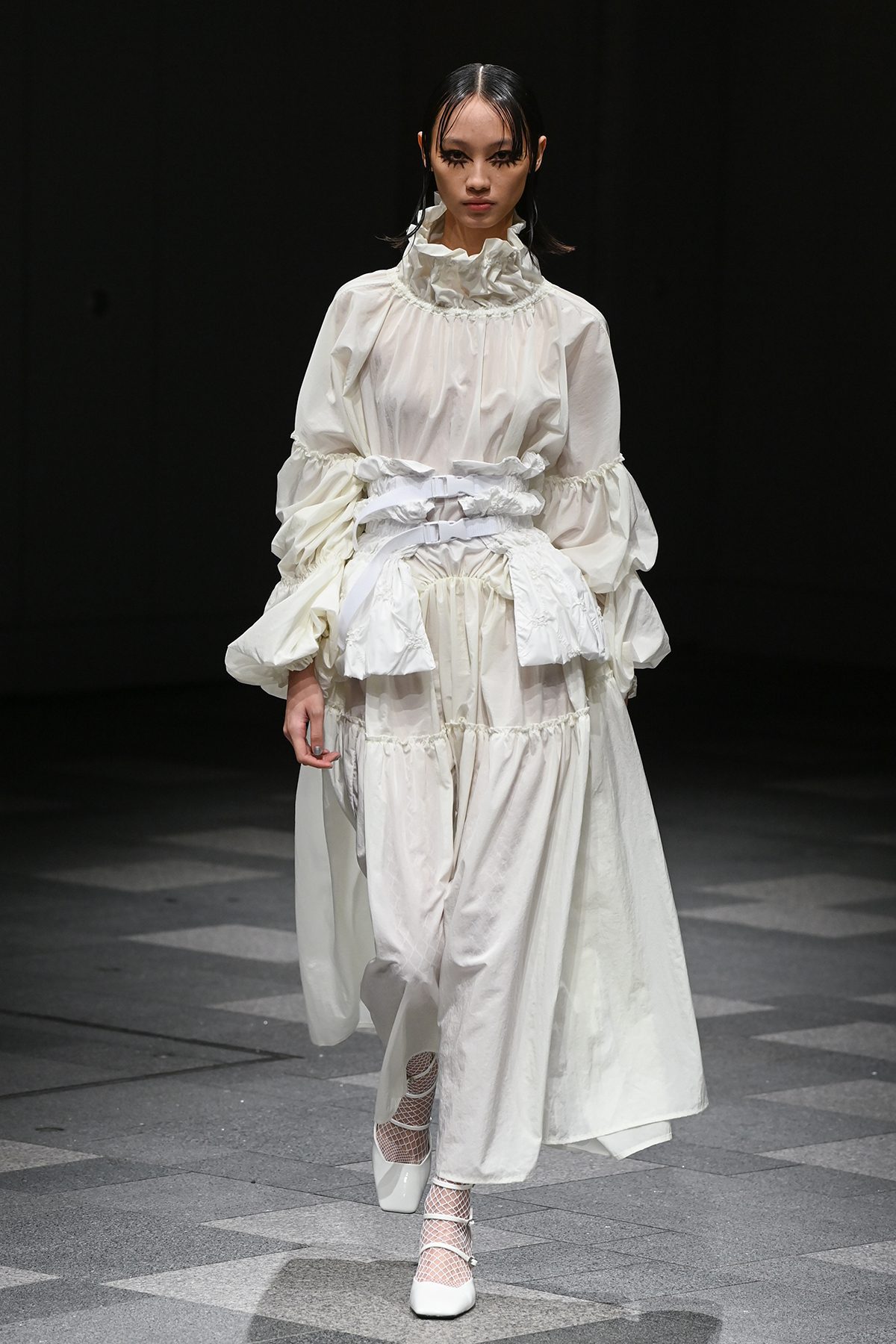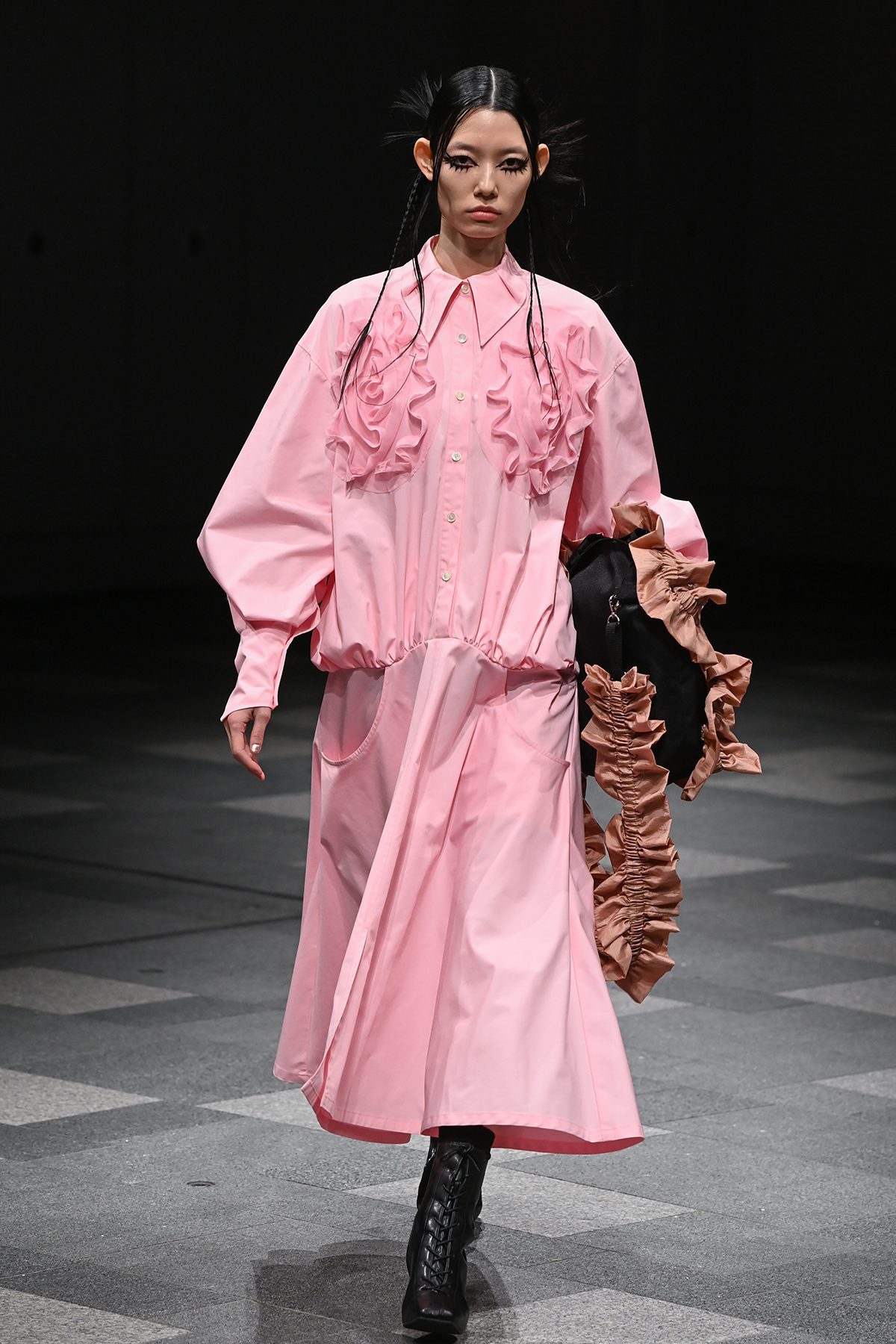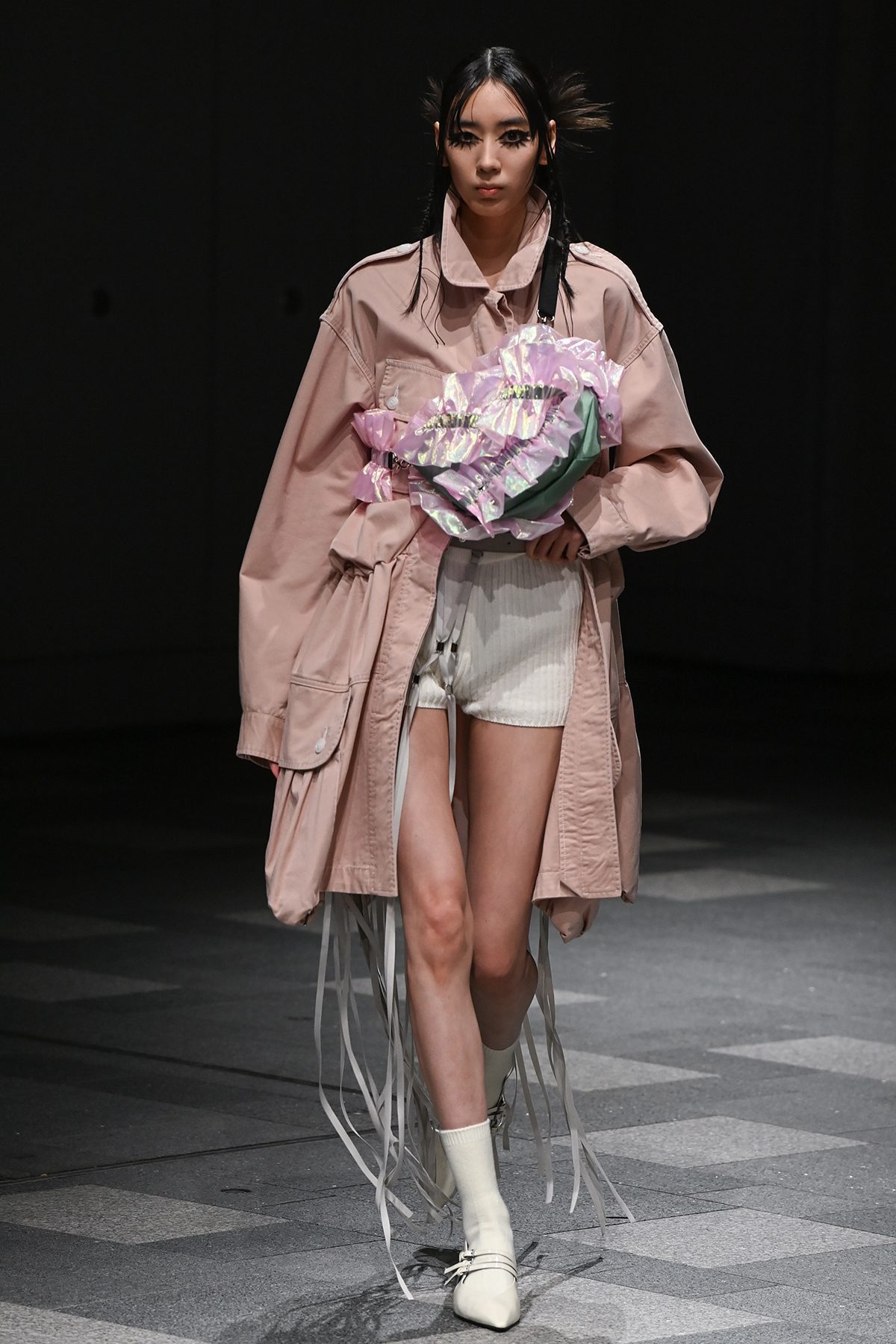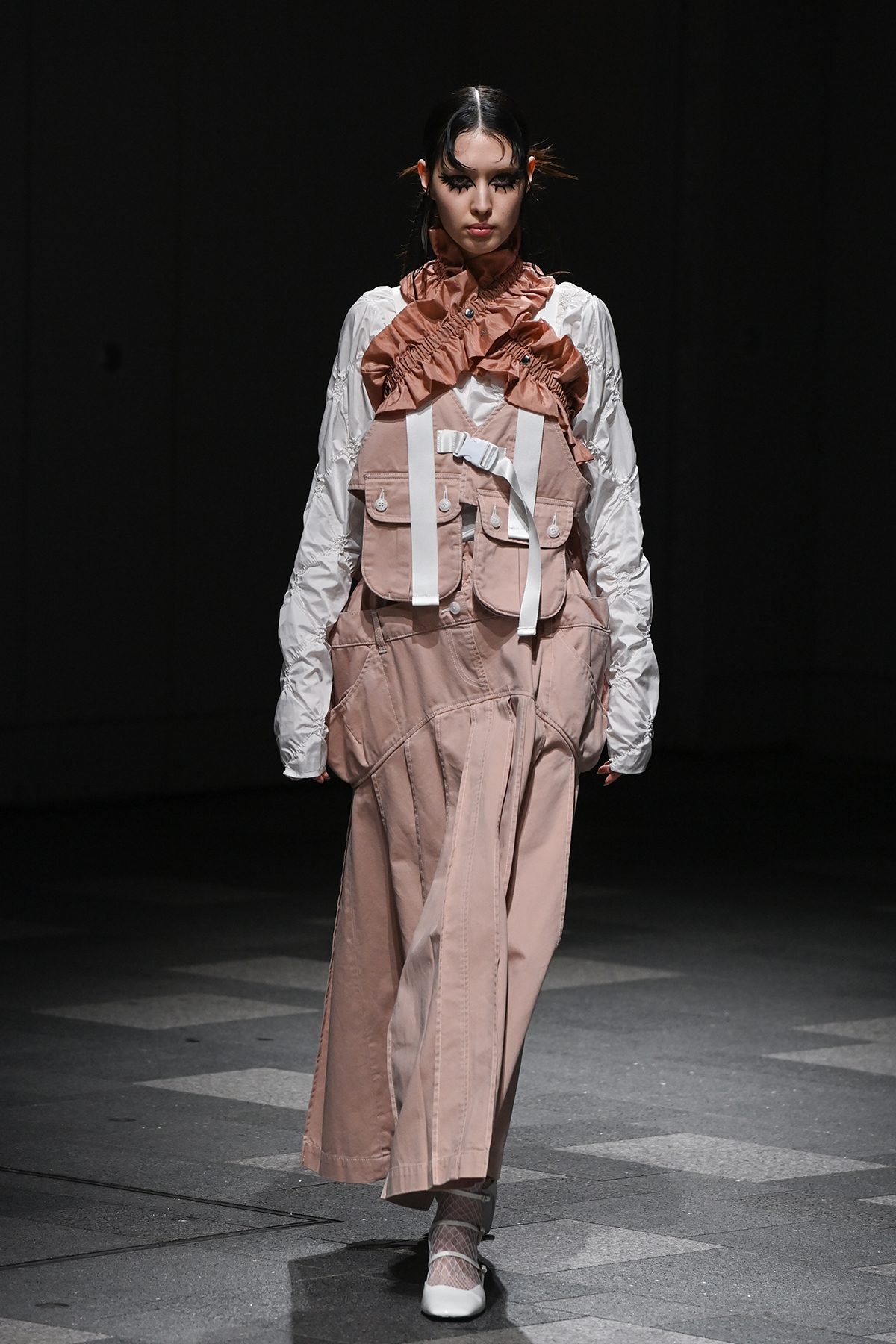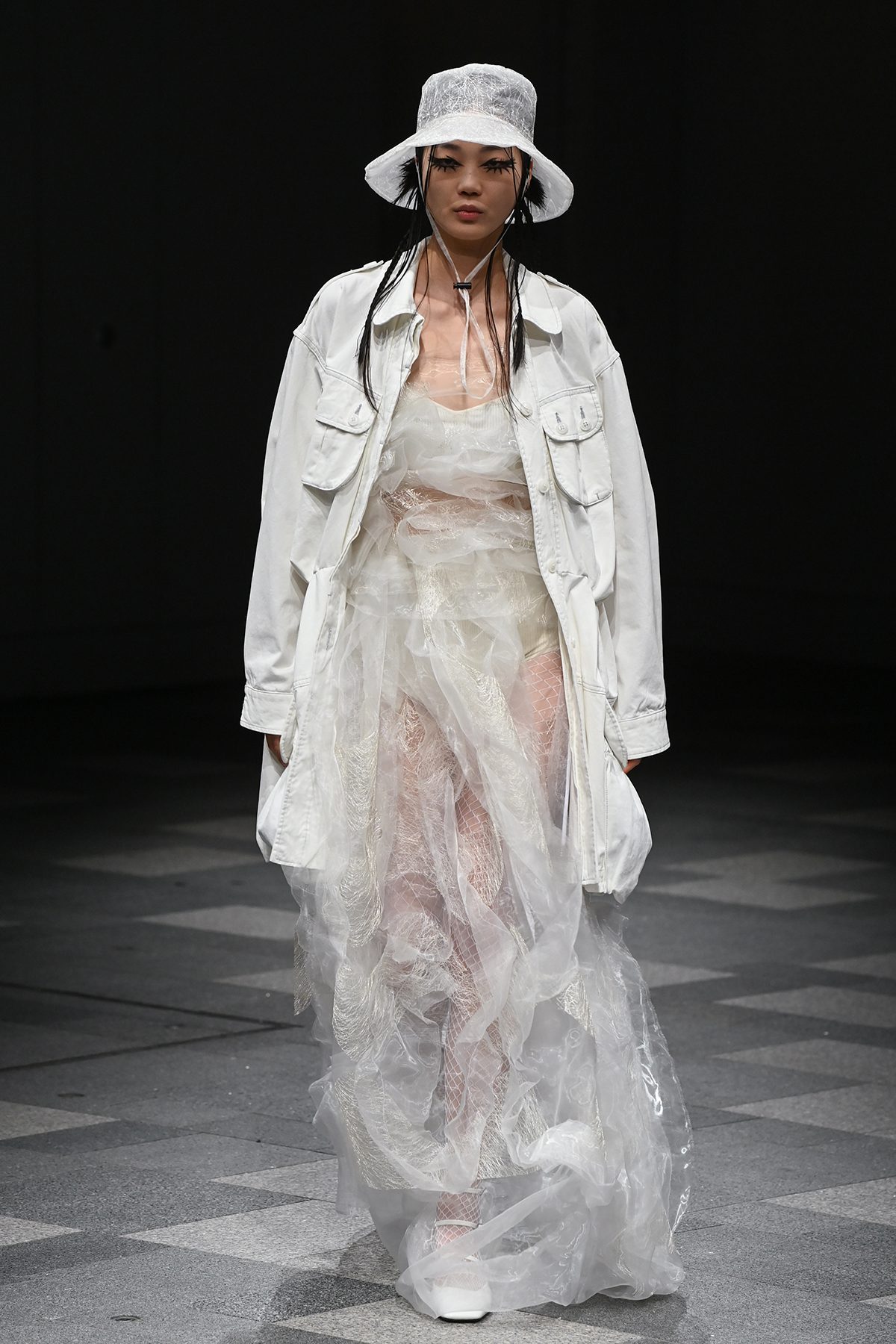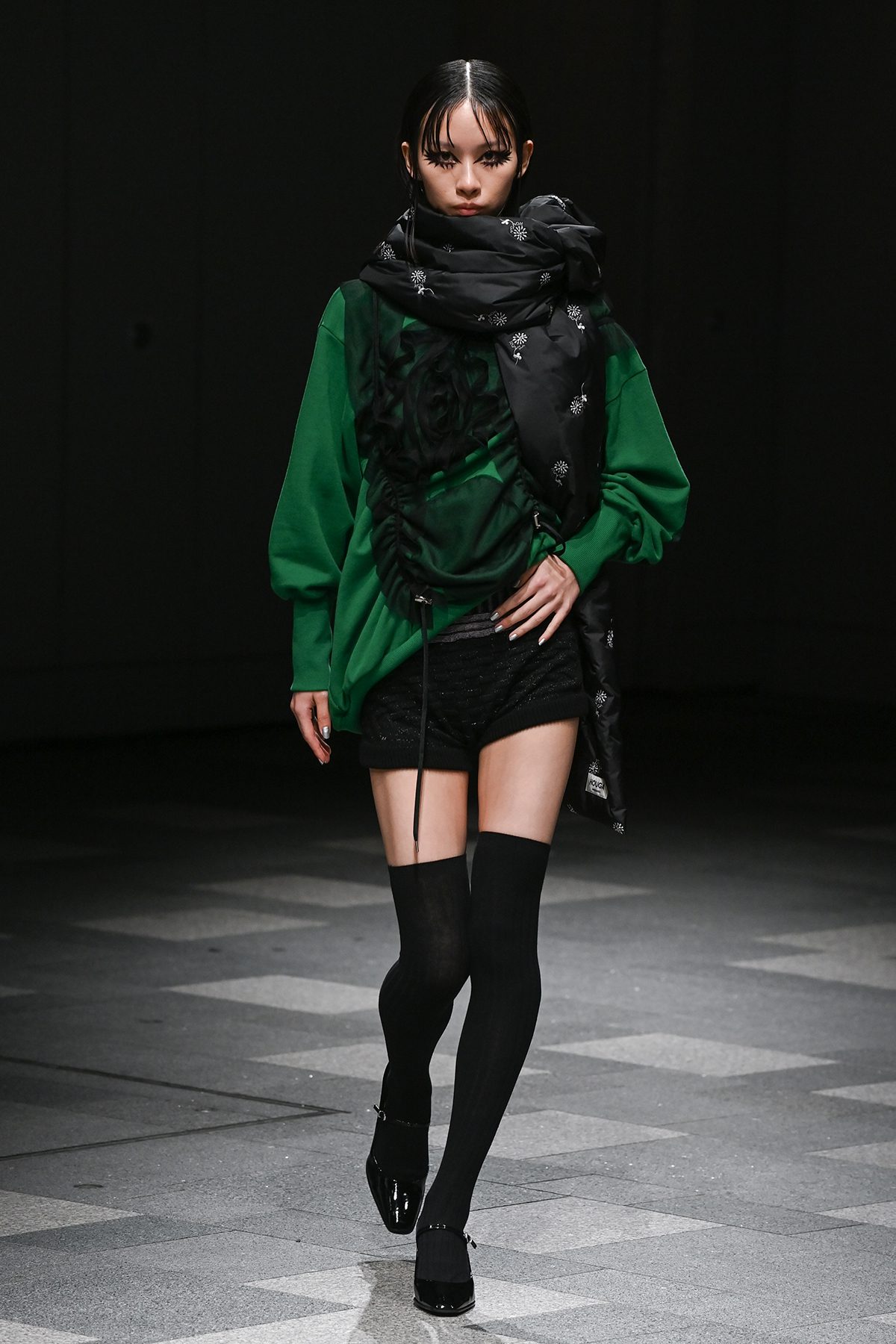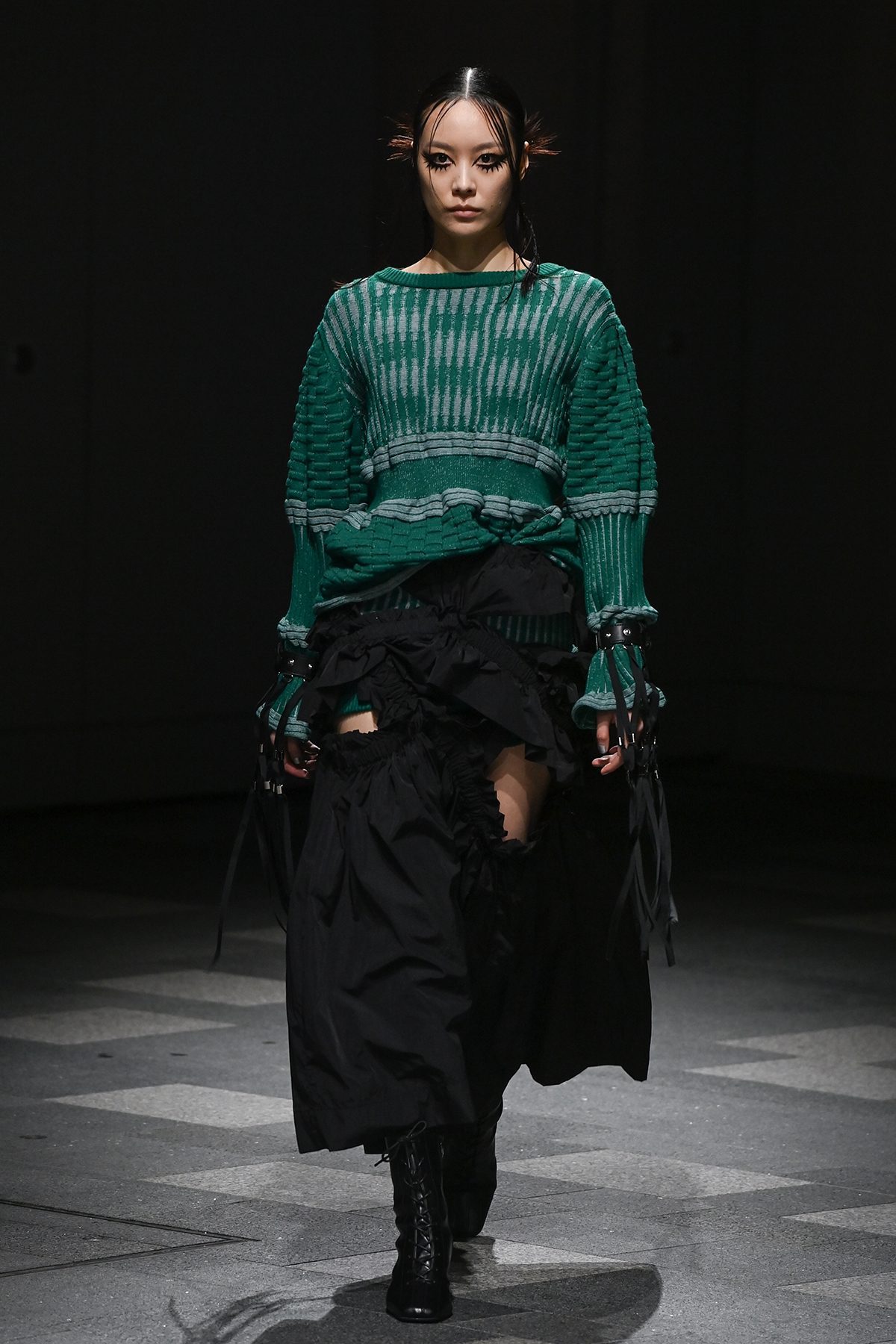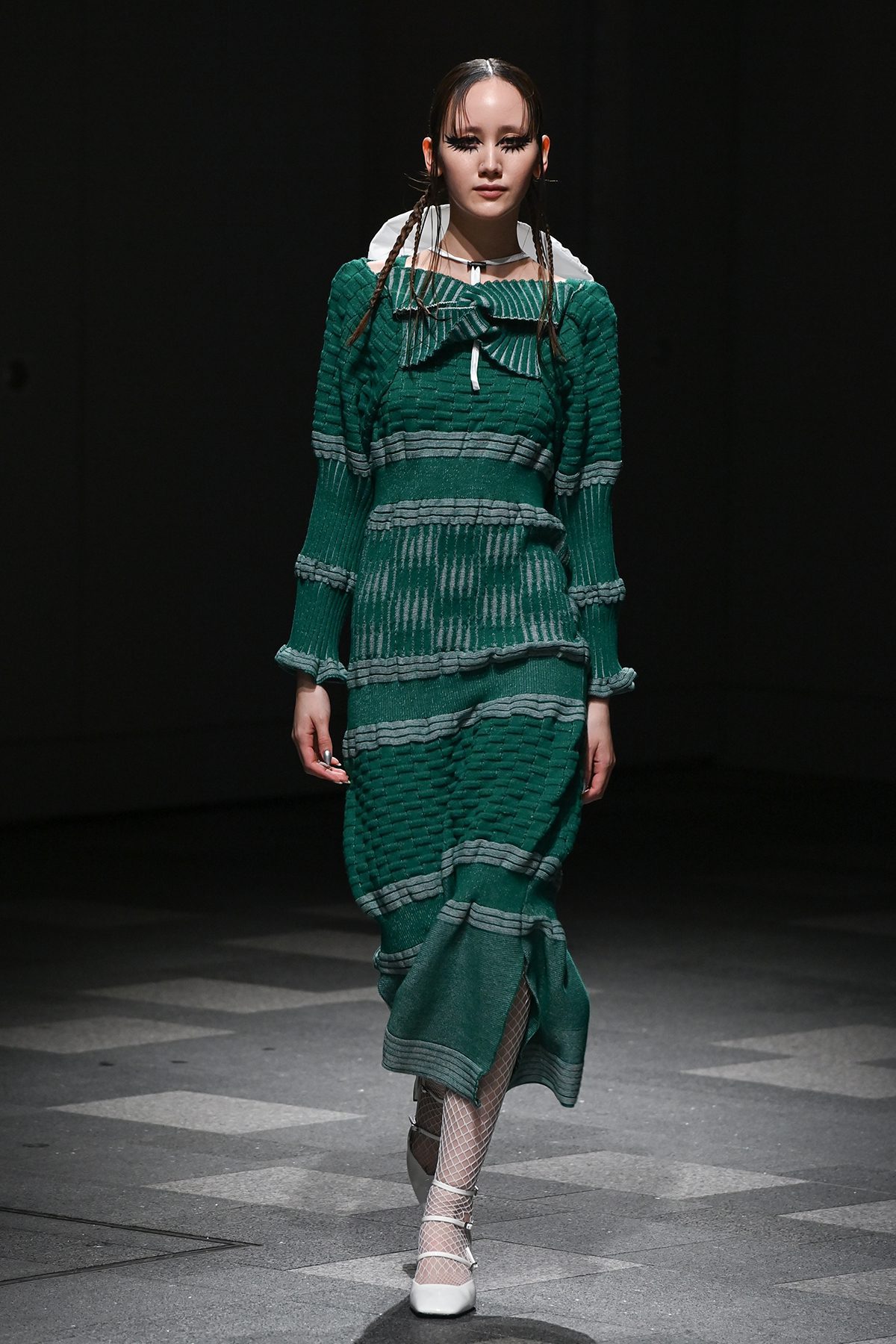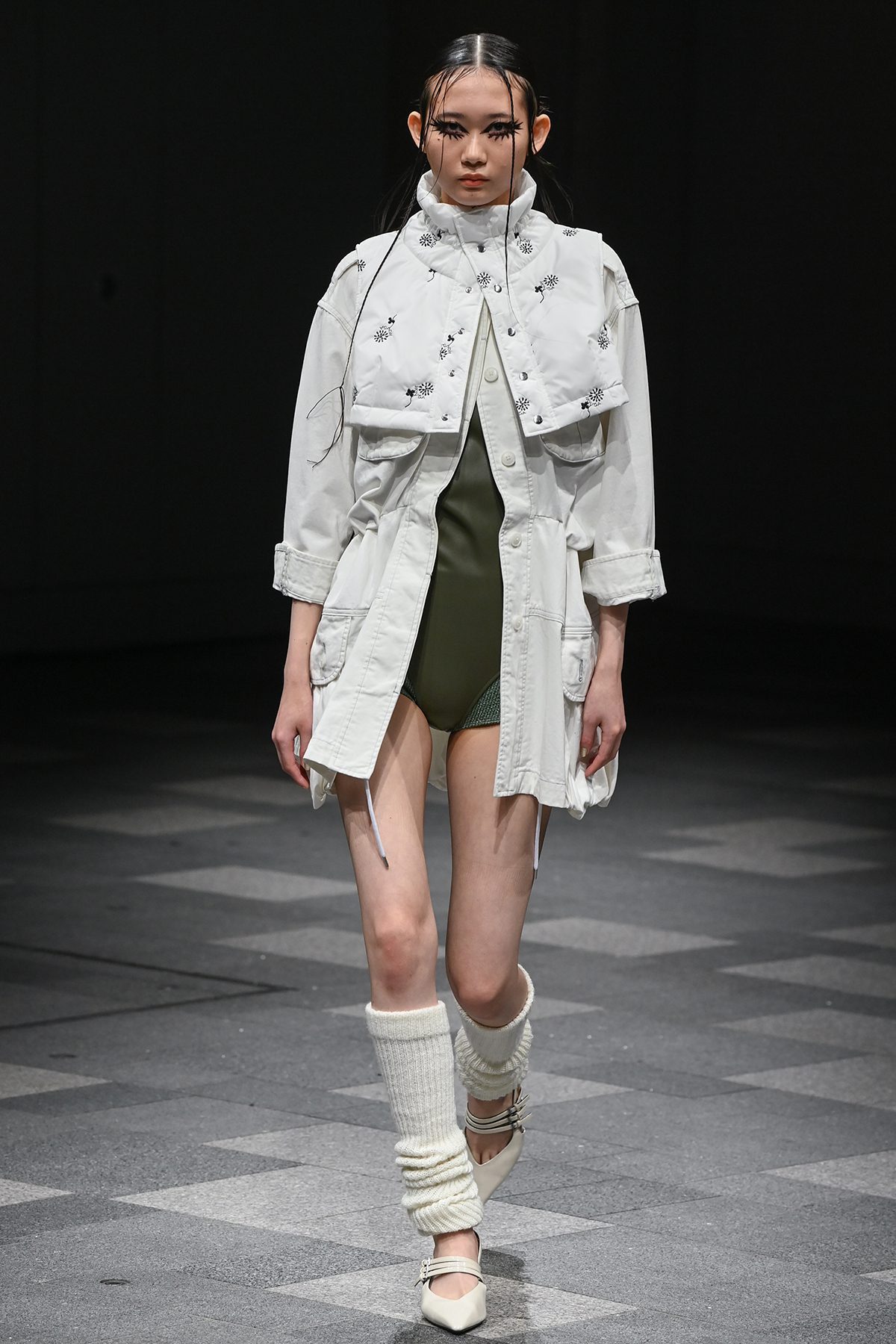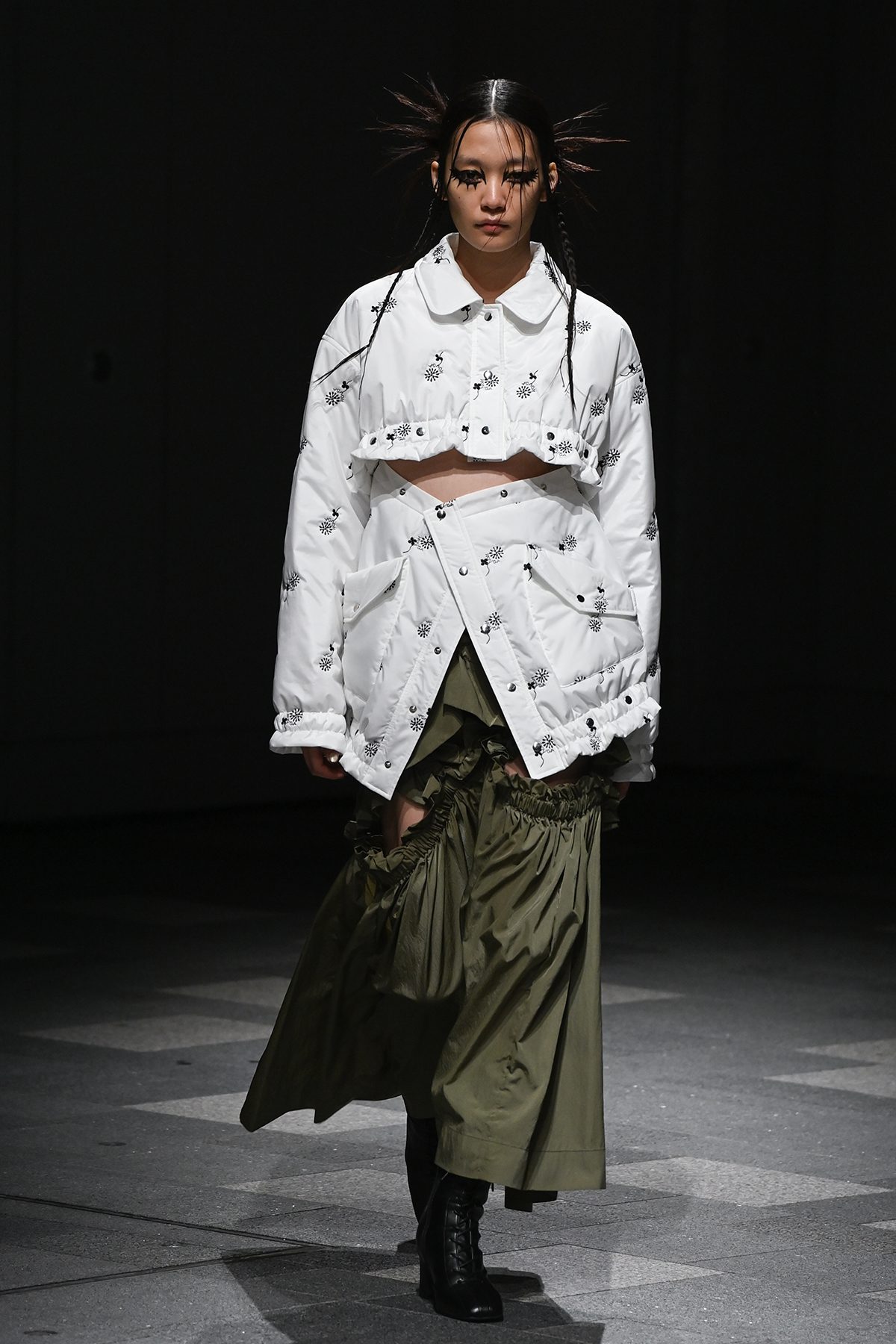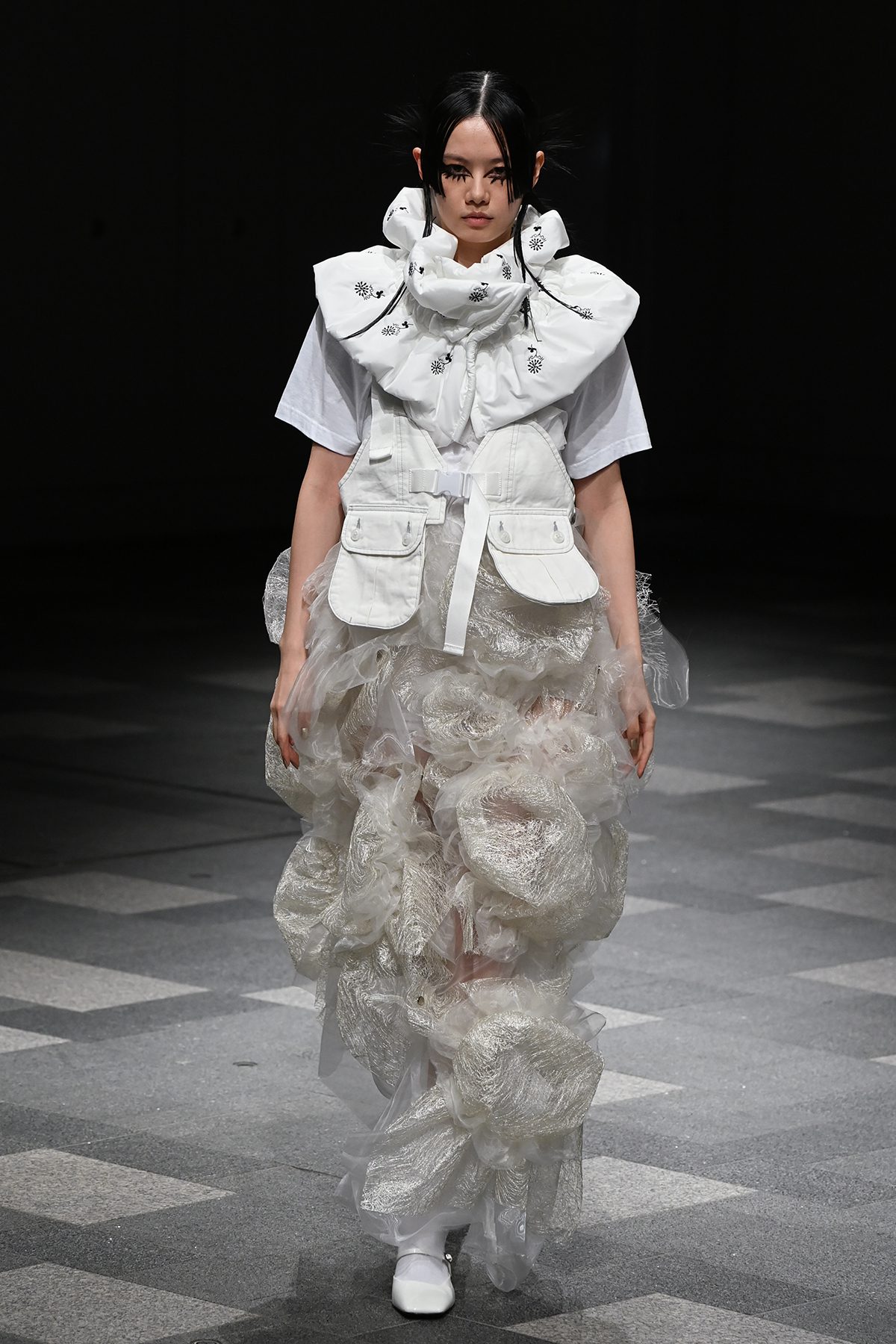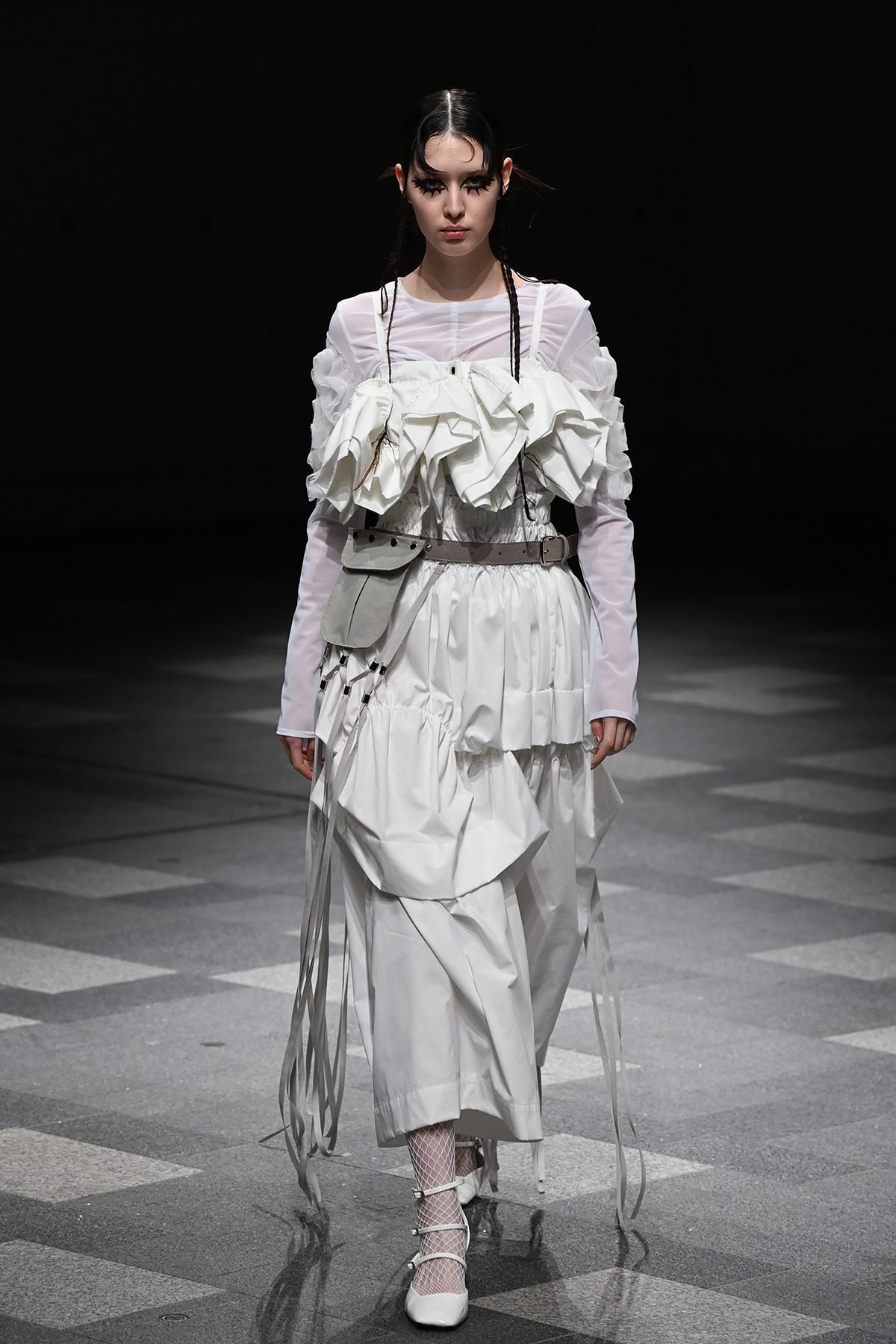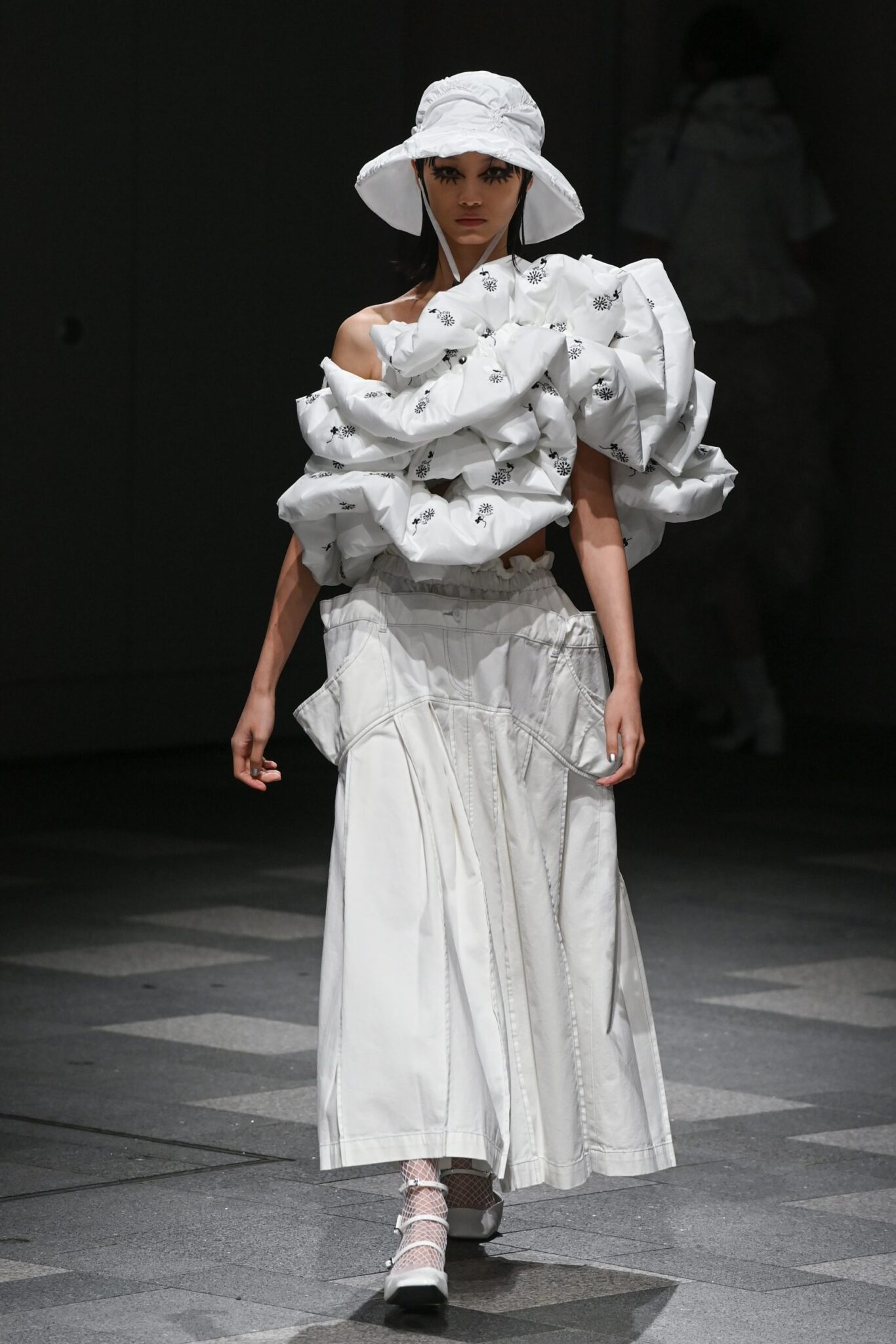A visit to HOUGA’S eclectic and explorative world. In an exclusive tour around the brand’s new studio, founder Moe Ishida gets candid on the brand’s creative process.
For their Fall/Winter 2024 collection, HOUGA explores the world of adventure. From Boy Scouts to travelers, designer Moe Ishida studies the different uniforms and modes of dressing that one would sport on an adventure. This exploration of utility wear and the outdoors aesthetic, mixed with their eclectic and extravagant design codes, results in several juxtapositions: shades of pink contrasting earthy greens and greys; utilitarian and cargo-style designs paired with frills and ruffles; chic skirts and sleek cropped blazers meet bucket hats and puffer vests.
Although this is a venture into new territory for HOUGA, we can still see the brand’s distinct individuality shining through in the collection. This ability to maintain their personality while experimenting with new concepts makes the brand stand out amongst fellow young brands. To learn more about the brand’s development and creative process, DEW visits their studio a few months prior to their Fall/Winter 2024 runway to get a first-hand insight from the brand’s founder herself.
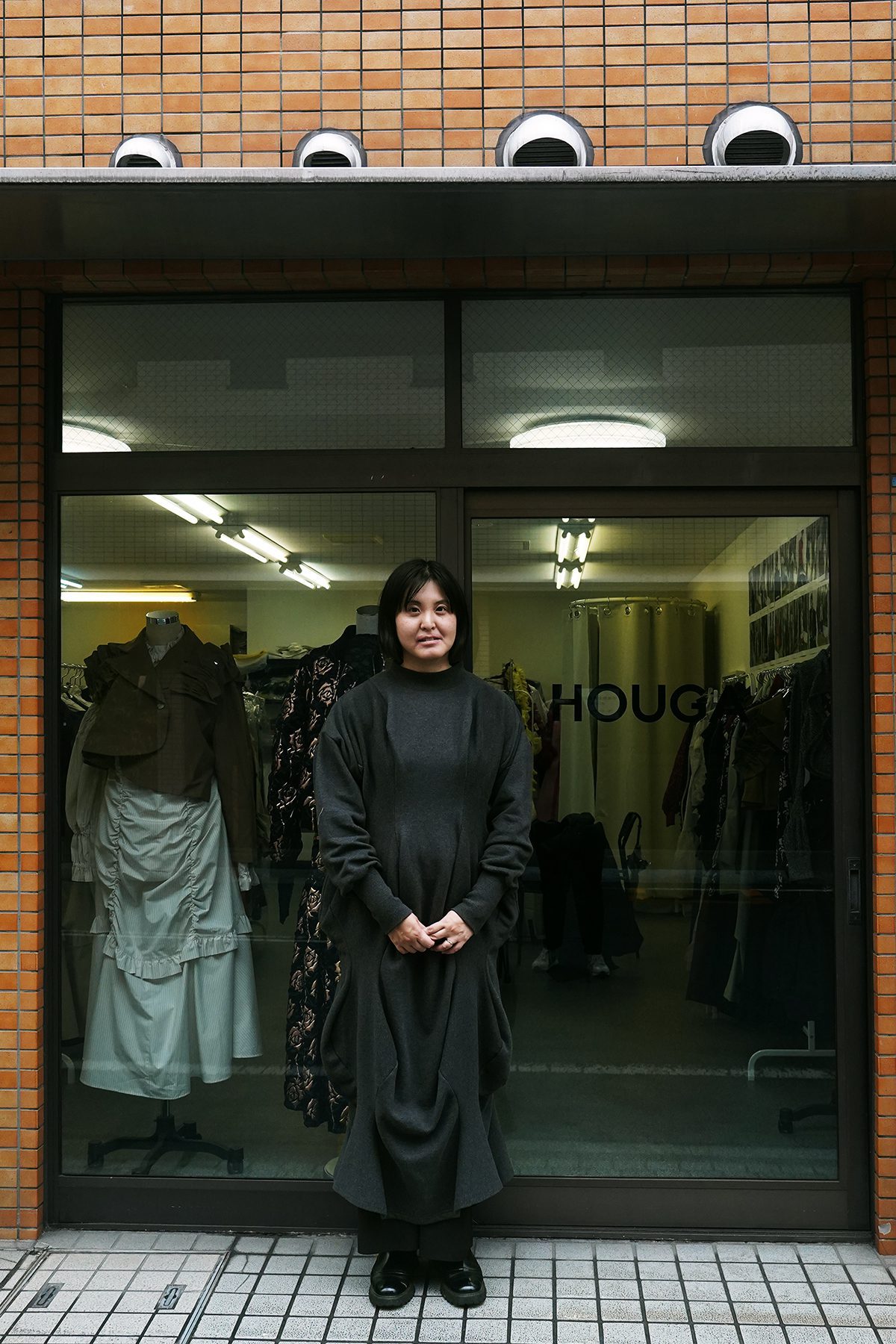
When crafting new collections, HOUGA makes an effort to do as much as they can by themselves. Ishida shares that although being hands-on allows her to have creative and quality control of what they are making, it still remains a struggle for their small team, “Patterns, creating samples, finding tools, coordinating with partners. Making things as you want is hard. Also, everything is going to be expensive. We need to think about how to make things that are easy to sell. I have a lot of ideas in my mind, but I also have to control the price. Because the techniques here are hard to make, right?”
To create their detailed pieces, the team explores a lot of difficult techniques. She mentions specifically that perfecting their frills, working with mesh, and finding the right textures are the hardest details to develop. But now that the brand is focused on growing as a business, they would have to be more mindful of costs and pricing. This new priority is also sparked by the brand’s recent progression in registering themselves as a business. Afterward, the brand received a grant from a local start-up support program called IDETACHI, which allowed Ishida to move from her shared office to a solo studio set in Arakawa-ku, where IDETACHI helps young creatives subsidize their rent.
In the studio, Ishida works with a small team that works rotating shifts. With a few of them being fresh graduates and students, her team also sees their time at HOUGA as a learning experience. Prior to the brand’s growth, she used to work on HOUGA alone at home, with books for references and inspiration piling up at her humble abode. Thus, this working environment is something the designer is grateful for: “Everyone’s mind became like doing the business as a company. It’s more serious. We study together at seminars, and we talk to other seniors about how things are going. Little by little.”
One technique that the brand does to grow their audience is by collaborating with curated select shops. A recent one is Studious, a multi-brand select shop that has a curation of niche and cult-favorite brands. In collaboration, the retailer requested that the brand design a few original items exclusively sold in their store. From this brief, Ishida and Studio decide what items to produce before Ishida brainstorms and pitches designs to the retailer. Similarly, the brand has also collaborated with Delta, another multi-brand retailer that specializes in eccentric yet subversive clothing. In these collaborations, she creates pieces that she would never release on her own, as this time, the rand’s goal is to attract the retailer’s audience, meaning they’d have to adapt their DNA into products that would attract the respective retailer’s audiences.
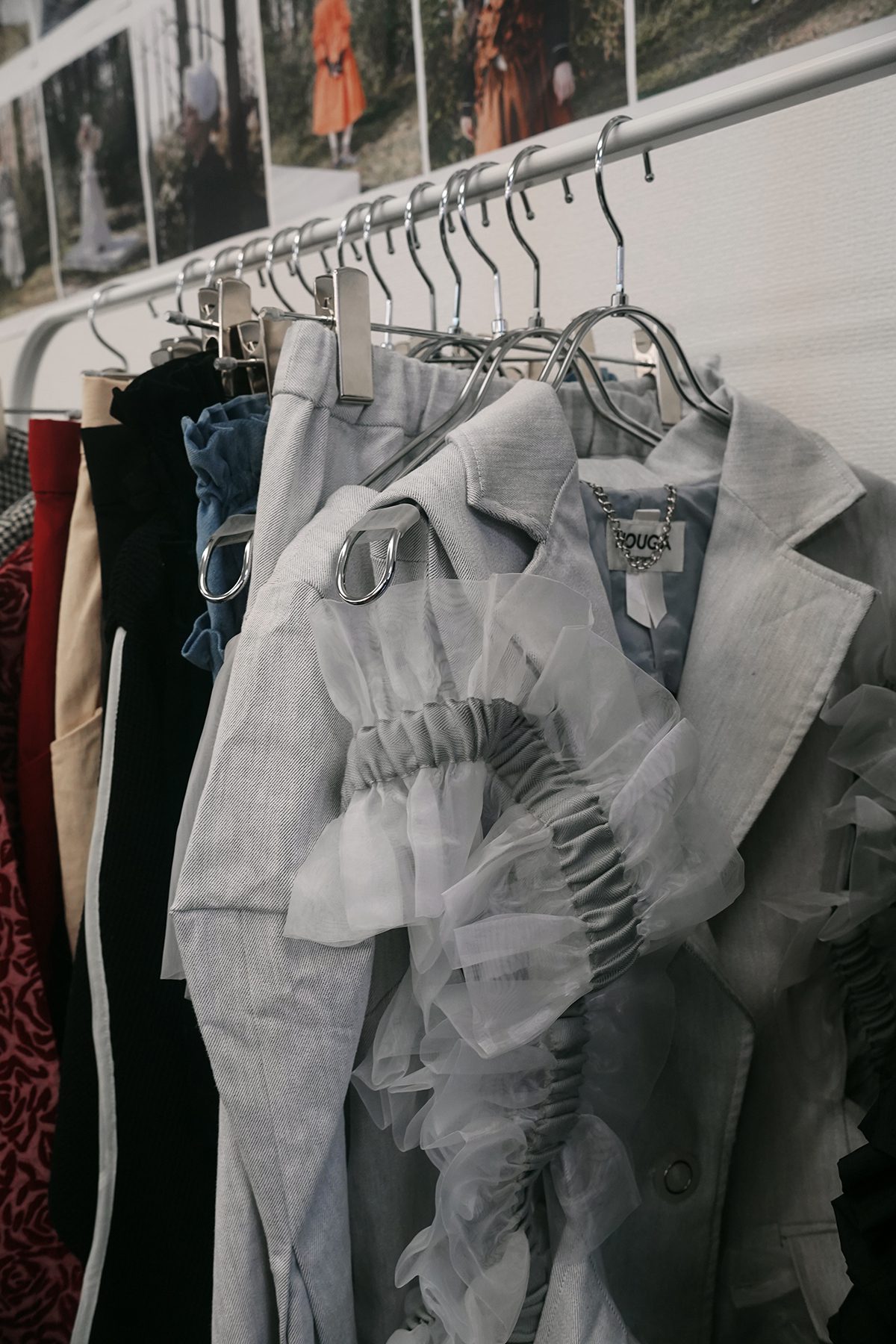
The HOUGA DNA is a strong one. It’s eclectic, whimsical, and full of twists. The pieces are versatile; you can sport them in one way or another. There are flowers, texture, and ruffles. Their pieces are full of wonder. It’s a melding pot of influences and inspiration, perhaps from the vast knowledge Ishida has collected from her days studying art history and fashion design, along with her years of growing the brand. Throughout their collections, the designer explores various themes and concepts yet manages to keep the brand’s design codes intact.
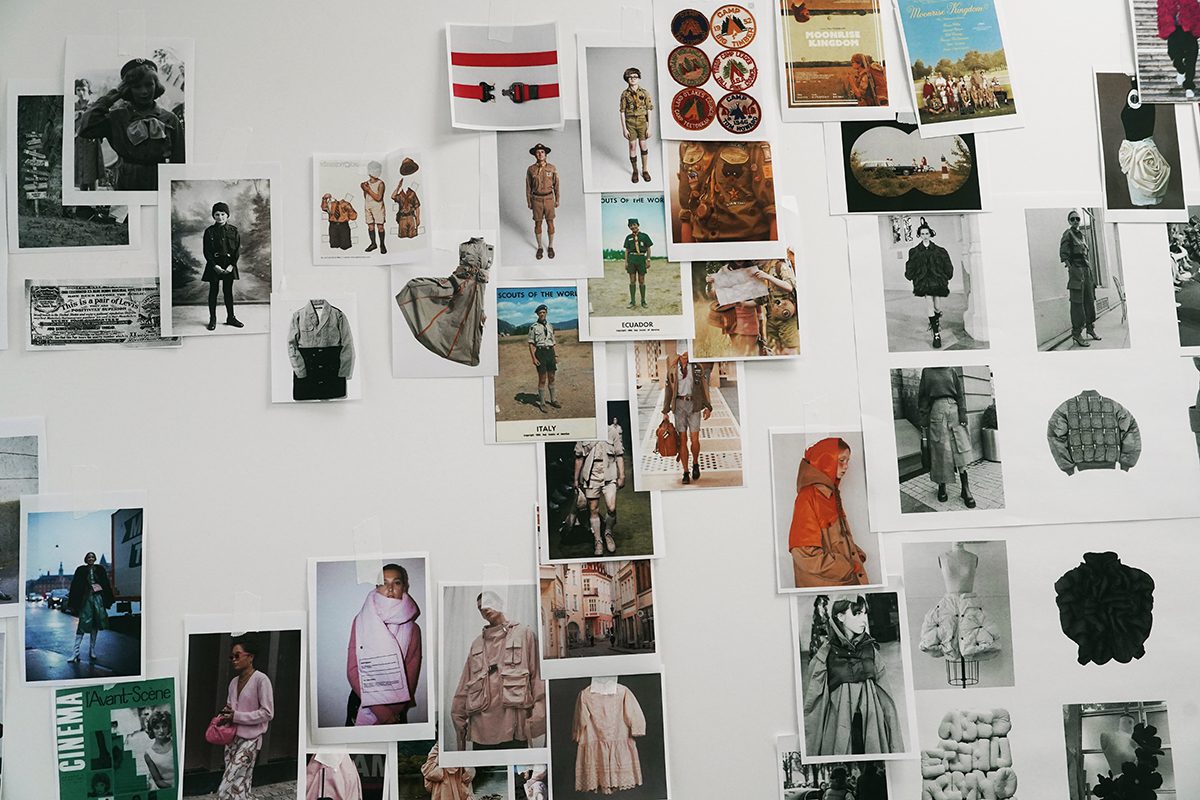
One consistent element throughout their portfolio is a touch of floral elements, ruffles, and ruches, along with experimental fabrics. During our visit to her studio, she showed us containers filled with fabric swatch books and samples from different suppliers. The designer also keeps scraps and rolls of leftover fabric that remain unused from previous collections. To HOUGA, the choice of fabrics we see in their final output comes from a long-winded selection that Ishida makes in the early stages of developing a new collection. In fact, the designer tells us that she decides on a fabric first before designing her pieces.
To her, the choice of textile is something she’s particular about, knowing just how much the right choice of textile can either make or break a design. In some cases, she would already have a texture in mind and request textile suppliers to bring something similar to her. “Yes, I go to fabric shops. There are also times when fabric shops come to see me. I also ask for fabrics that I want and send them to the fabric shop. I go to them and ask, do you have any of this kind of fabric? And they send samples here,” Ishida explains, “So I pick around 10 fabrics first. From each fabric, I design around 3 items. And from there, it ends up being around 30 items in total. So fabric first, then the design.”
After showing us her collection of fabrics, she goes on to show sketches and drafts of patterns that are in development for the recent Fall/Winter 2024 collection. On her table lie several printouts of her print designs on paper, and some have already been printed onto fabric. When it comes to these graphic fabrics, she designs and illustrates her print in her studio with her team. They then print these graphics onto paper, to see how the print looks like when physicalized, and once they are sure of a print’s layout, they continue to work with fabric suppliers to see which ones could create the most optimal outcome.
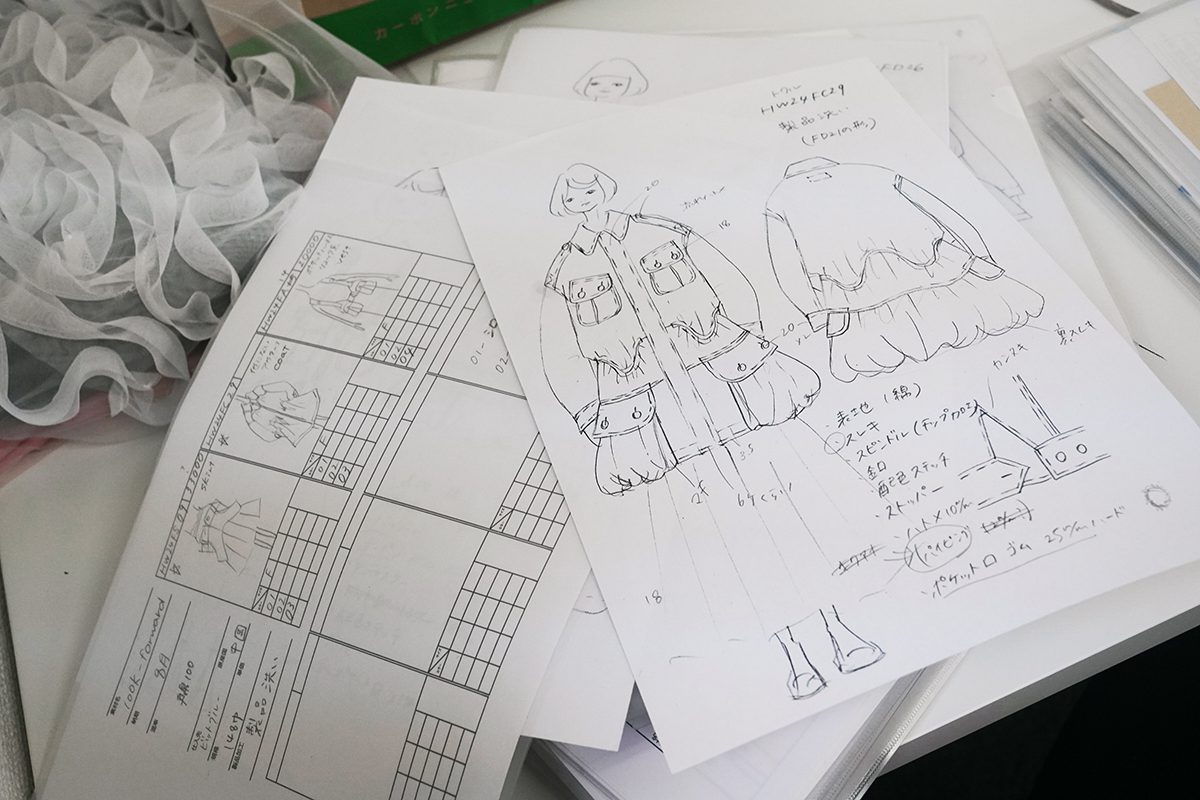
Ishida then takes us to her shelves, showing us several lookbooks and knick-knacks in her studio. Here, she tells us that these are the materials that the brand uses to promote and spread awareness after their collections are launched. There are thank you cards that she slips into every purchase, an attempt to extend their sincere gratitude to everyone who supports their brand. Then, there are also keychains, frilly shopping bags, and bag tags that were given out to customers who purchased their items at previous events; that way, their clientele is able to carry a piece of HOUGA everywhere they go on a daily basis.
Another thing the brand does after debuting a collection is to create two booklets. One of them features photos of models using their latest pieces, shot from different angles, in a setup and lighting that fits the mood of the collection. This one is meant to highlight and tell the story of their latest collection, visualizing the concept in editorial-style shots. The other book consists of models using their latest pieces in a more casual setting, perhaps walking about on the streets of Tokyo, sitting at park benches, or crossing the street. This book is meant to show customers and visitors that HOUGA pieces can be worn casually too to fit their daily activities. “Sometimes we see statement items, and we’re like, ‘oh it only looks good because it’s on a campaign,’ but like this, you can see like ‘Oh, I can use this for going out!’” explains the designer.
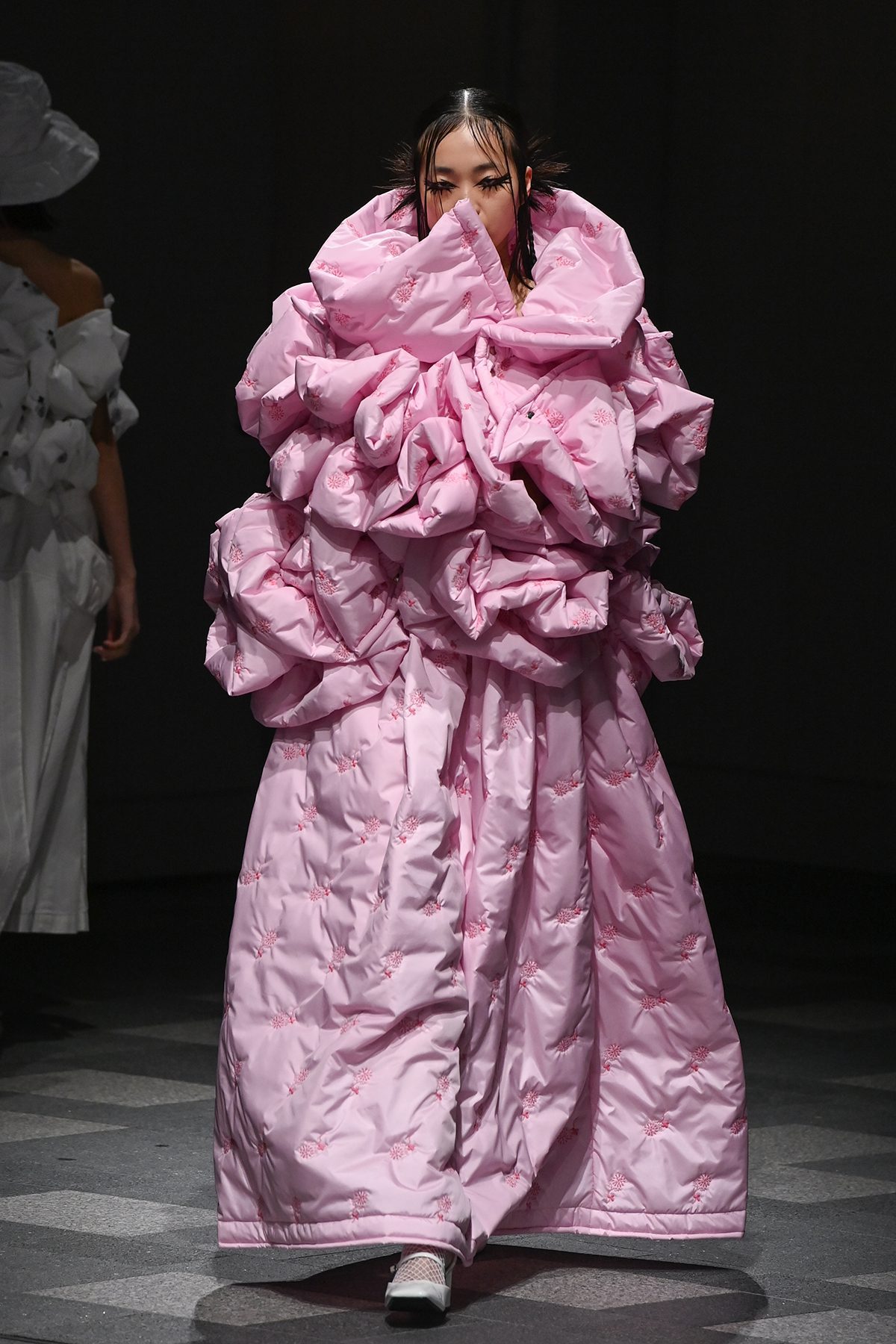
Communicating their message and story to new audiences is always something HOUGA is keen on doing. In fact, one goal that Ishida has for HOUGA in the near future is to build a stable and strong bond between the brand and their customers. Soon, she also plans on opening thei new studio open for public, allowing their audience and visitors to be able to try on their pieces directly whilst also meeting the team. With an open heart and mind, Ishida looks forward to welcoming new faces to enter the world of HOUGA. (Text Vanya Harapan)
